Collector
I was reading a book on the history of batteries in which the author used the terms “evolution” and “adaptation” purposefully to relate the development of battery technology to biological change. Simultaneously, an enormous proportion of the current “good news” on climate change is about battery advances. The works in this series are inspired by the little ecosystems depicted in battery diagrams. I am deconstructing, blending, and reconfiguring the them, imagining new relationships and entities and thinking about our own interconnectedness.

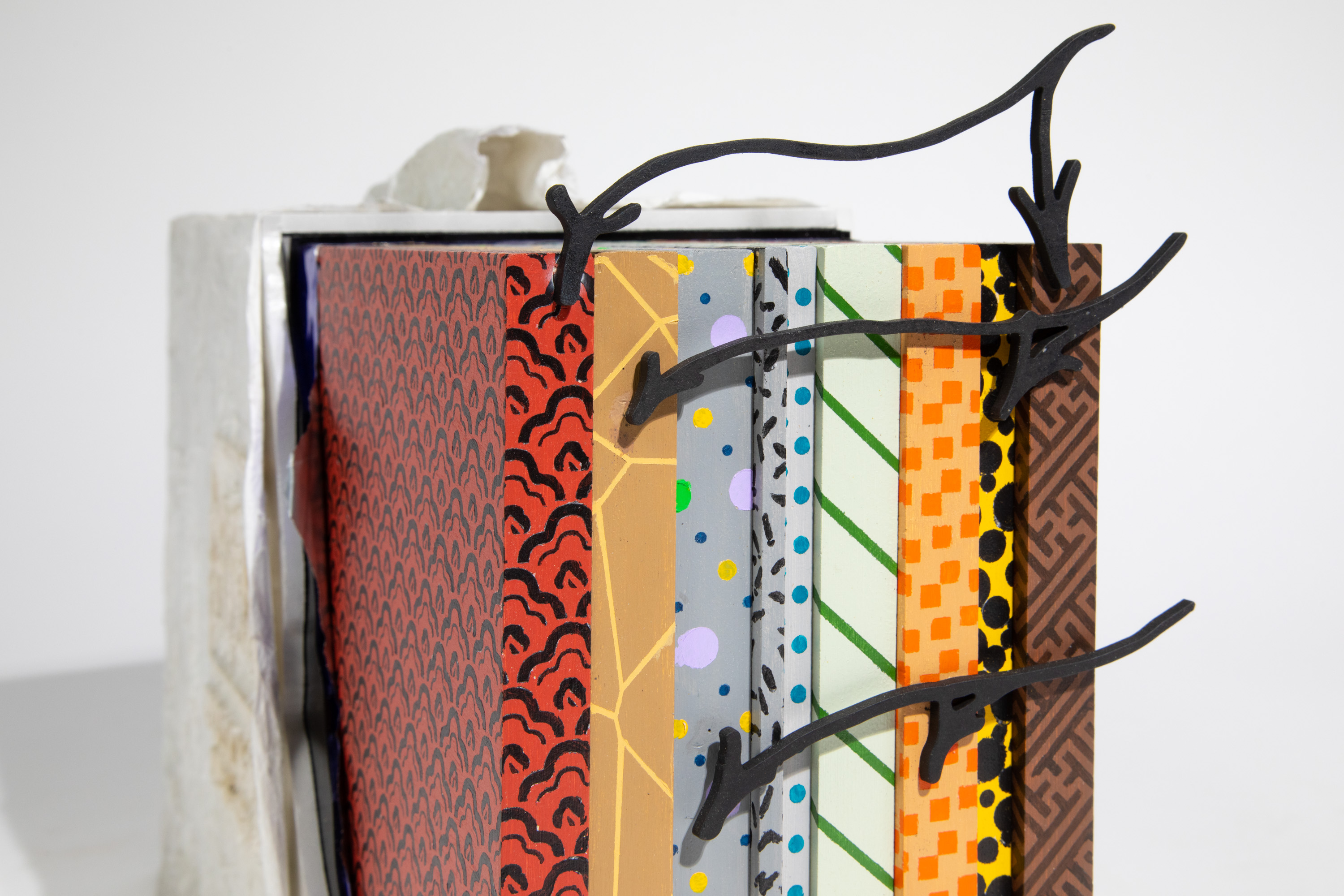


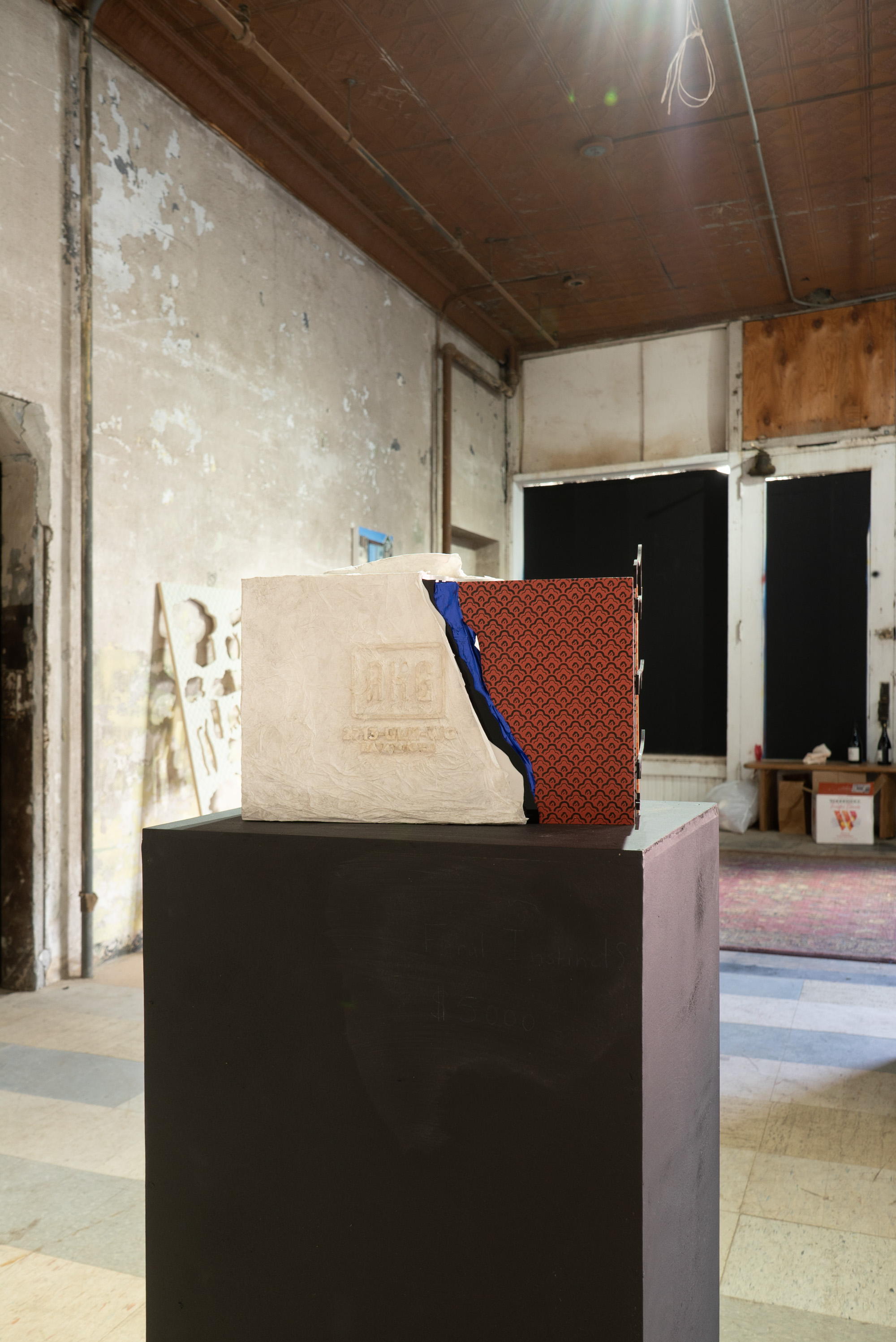
Collector
2023
Plywood, MDF, acrylic, tissue paper, polyethylene
12 x 16 x 8 in.
Waiting in the Deep, No. 1
Waiting in the Deep, No. 1 is an exploration of the complicated and entangled issues around deep sea mining. Metals such as nickel, manganese, and cobalt are crucial to battery technology, and thus to climate action as a whole. But the ocean floor is a vibrant and ancient ecosystem that we know very little about. Some organisms living near hydrothermal vents may be almost as old as the Earth itself. What we already know about these organisms is that they are profoundly entangled with, connected to, and contingent upon their environment—as are we.
An alliance of 24 countries oppose deep sea mining, but Norway has recently approved it. The International Seabed Authority (ISA) is supposed to finalize regulations by 2025.

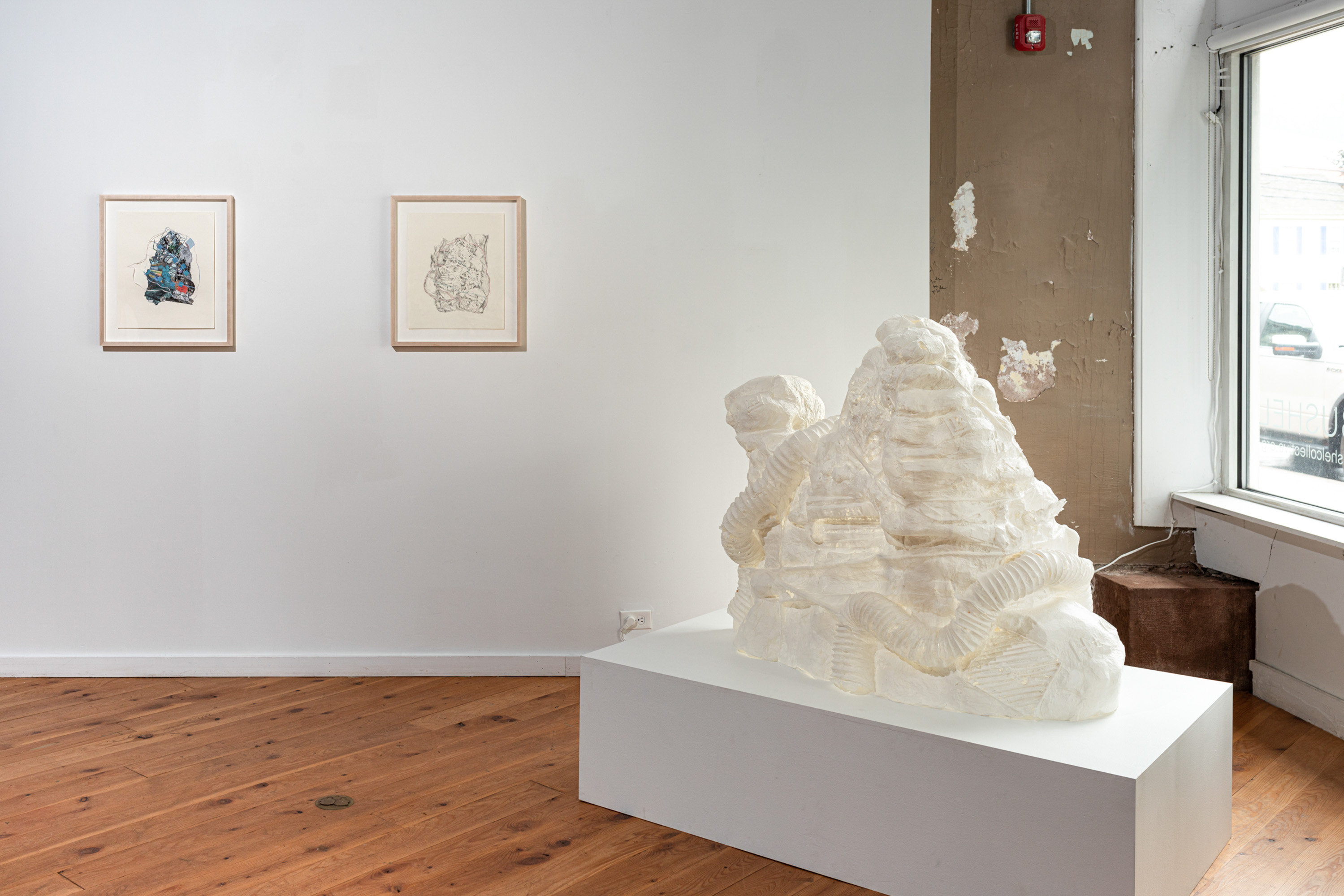
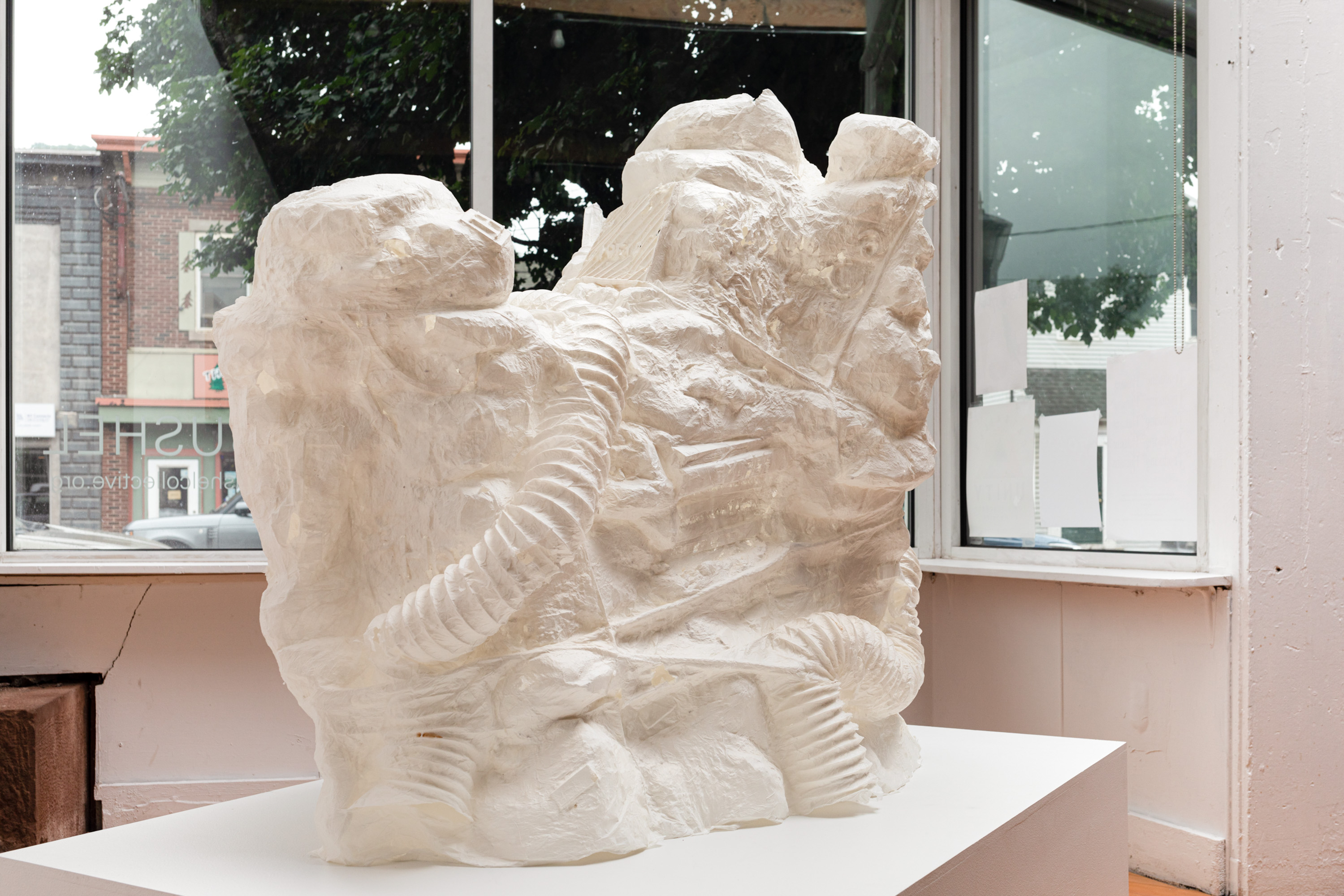
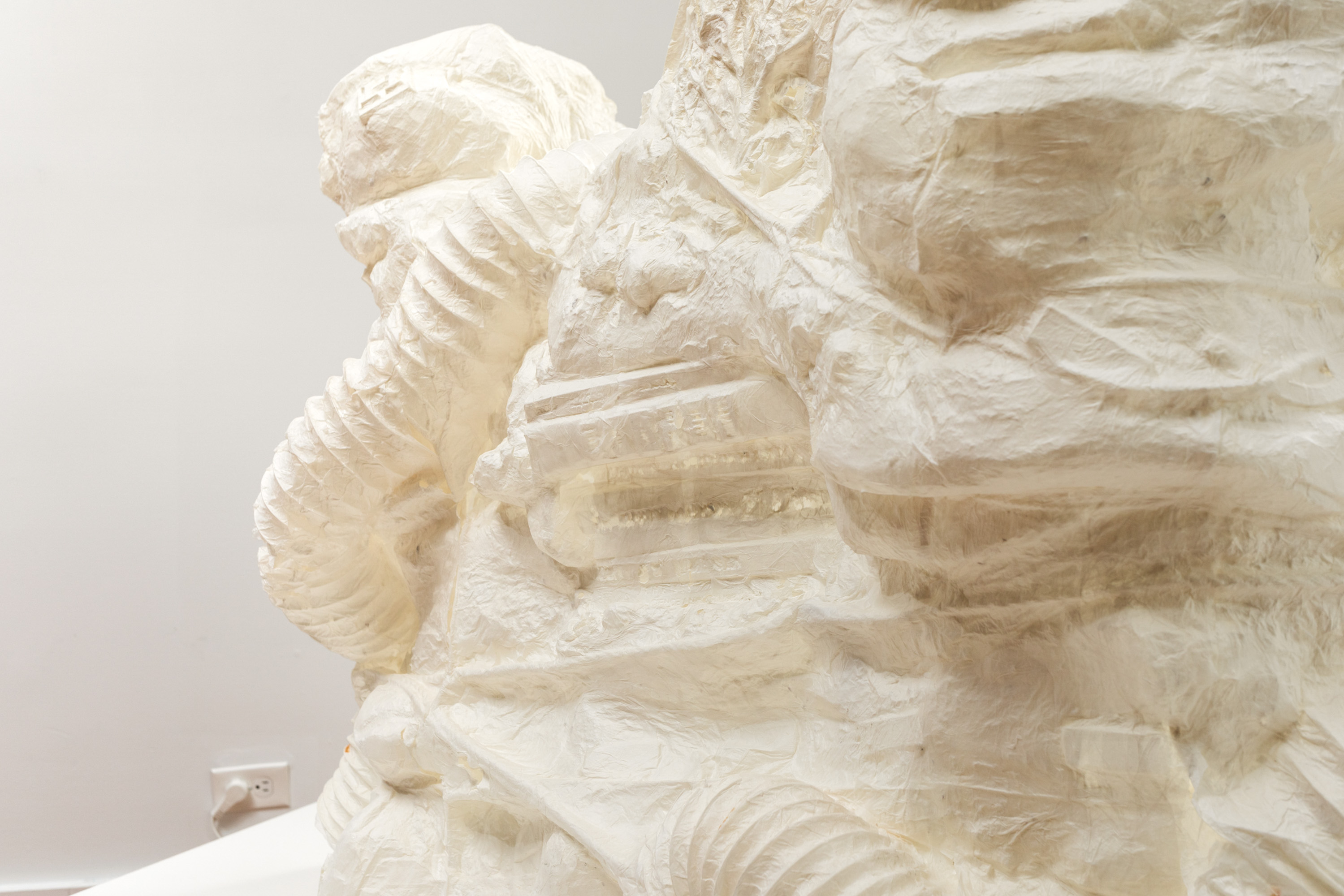
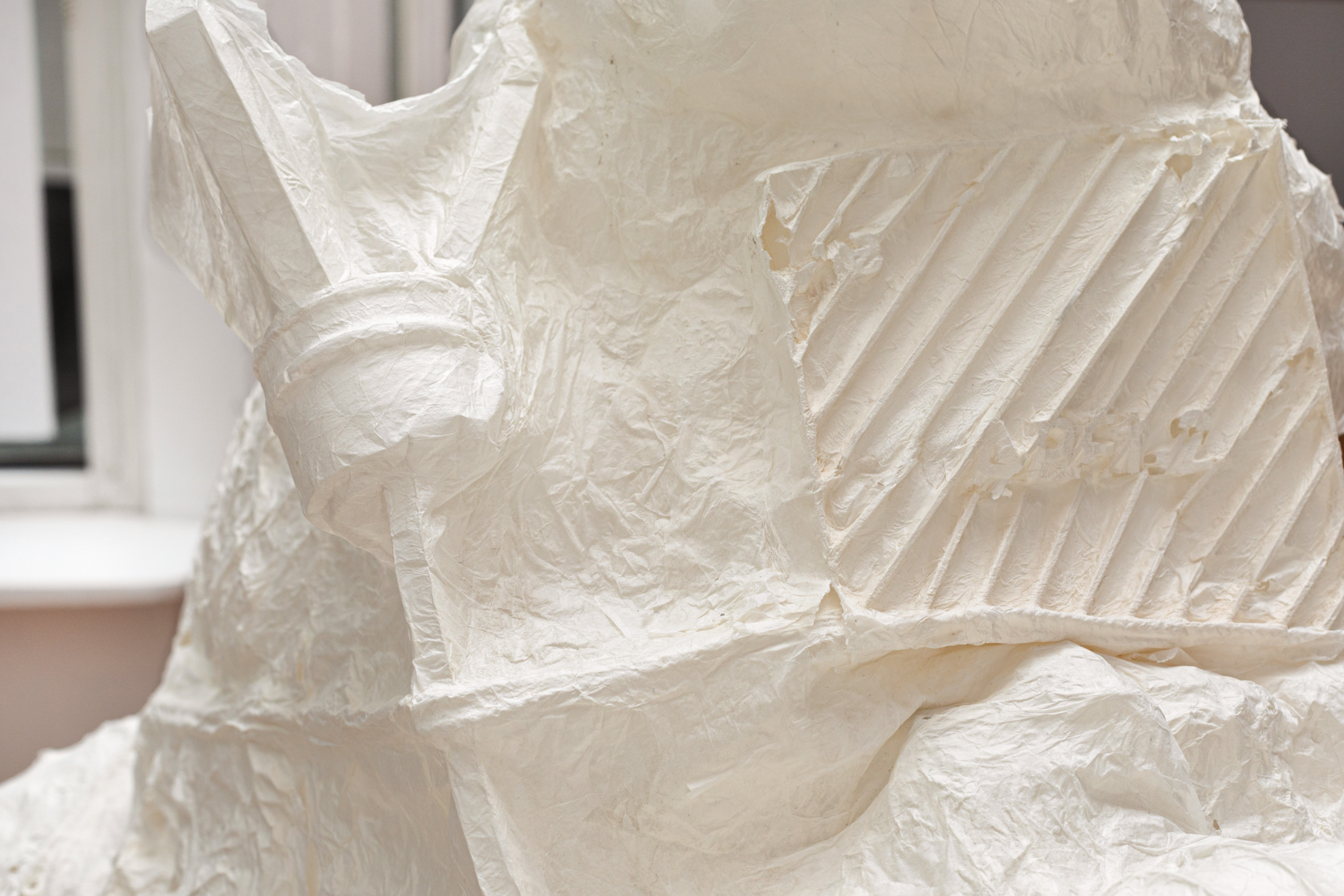
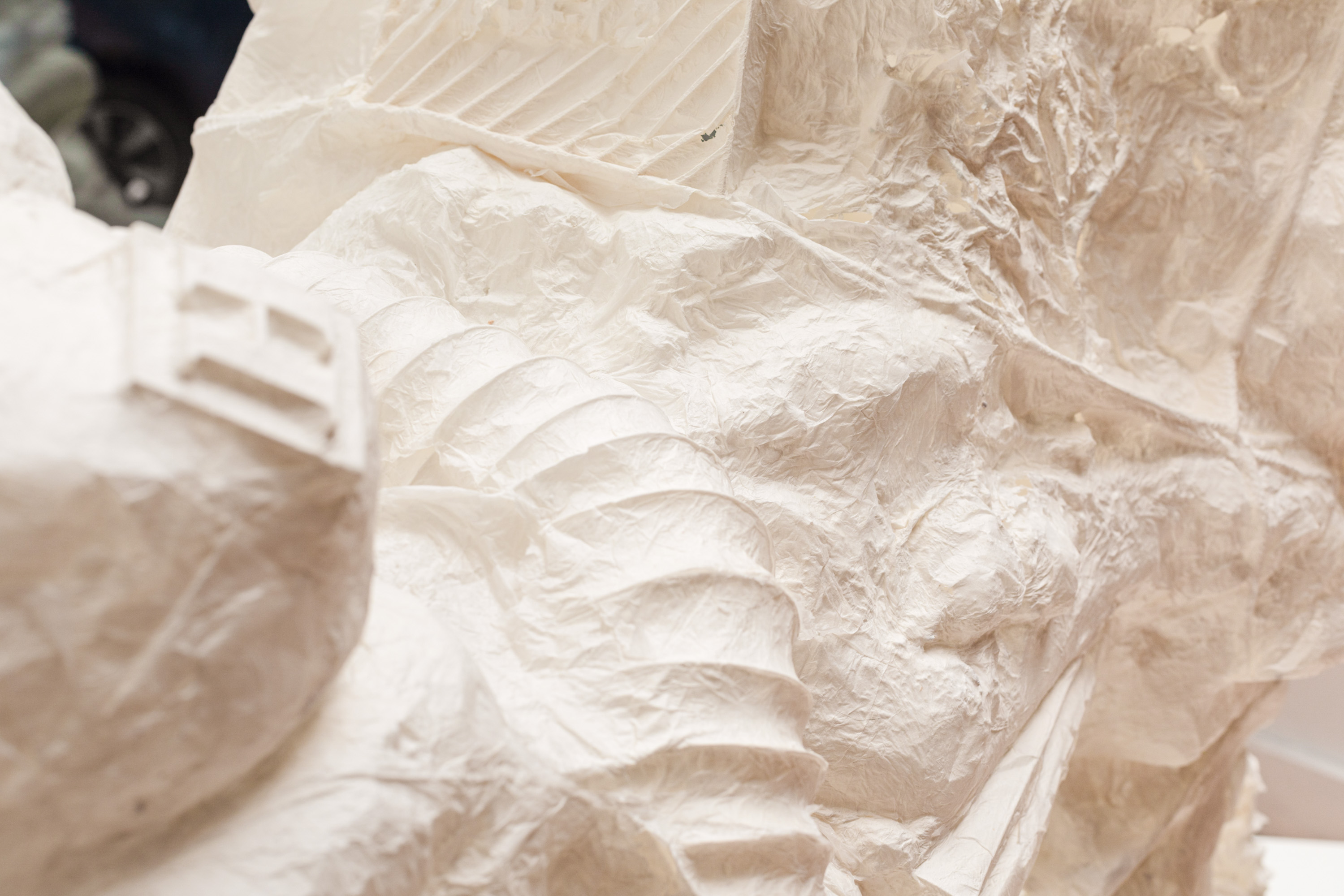



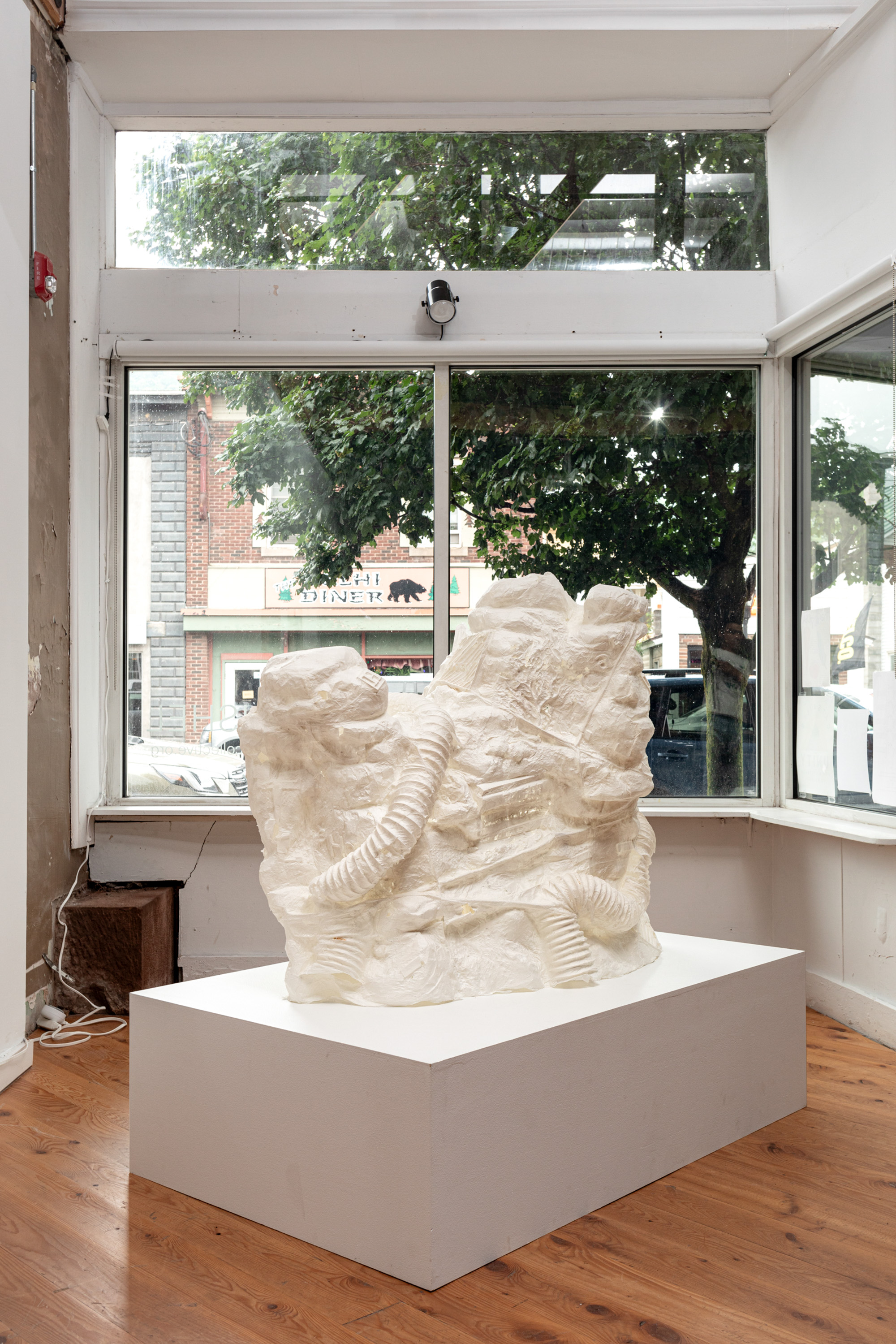

Waiting in the Deep, No. 1
2023
Molded tissue paper
39 x 50 x 28 in.
SKETCHES
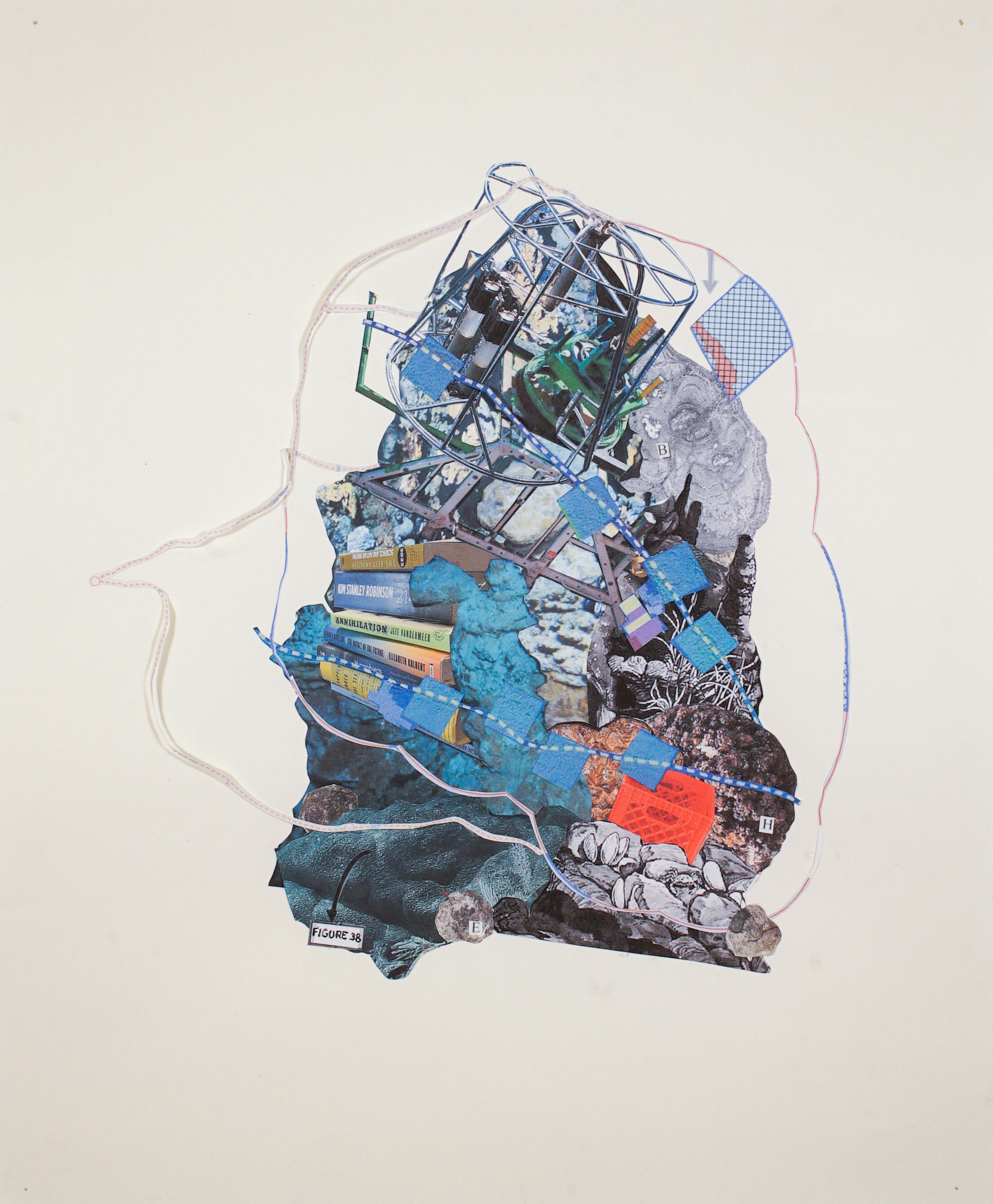

Finding the Right Moment
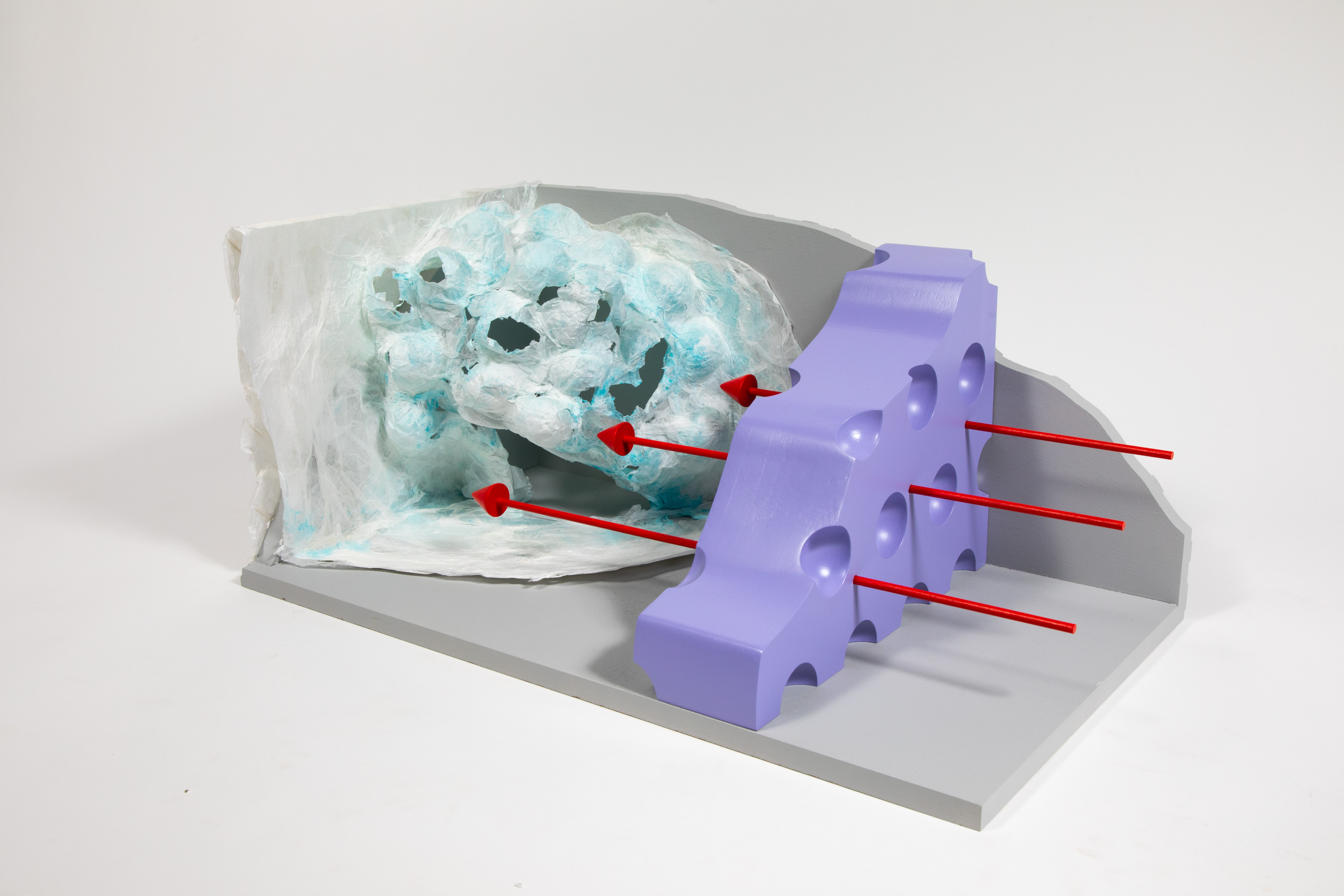

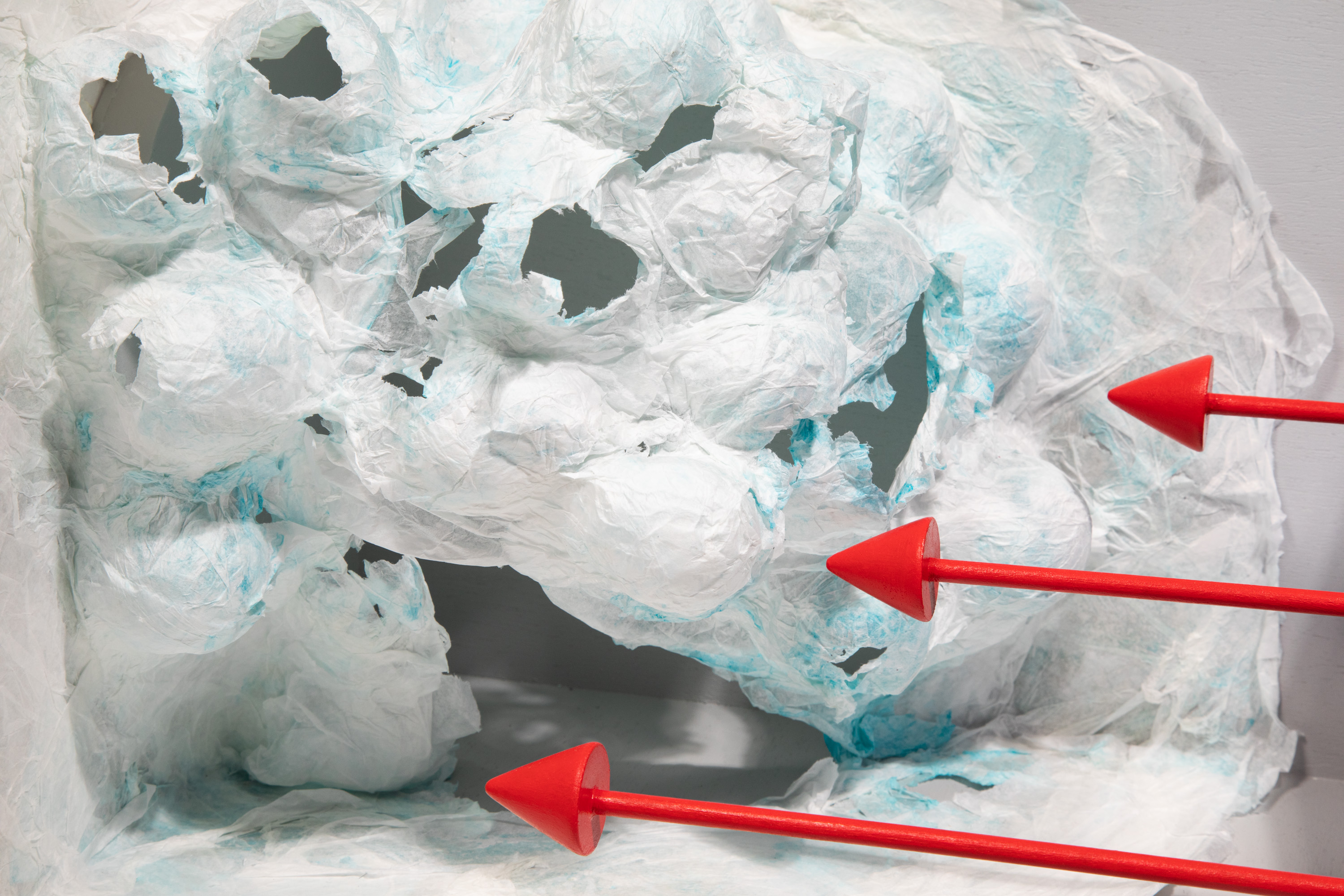
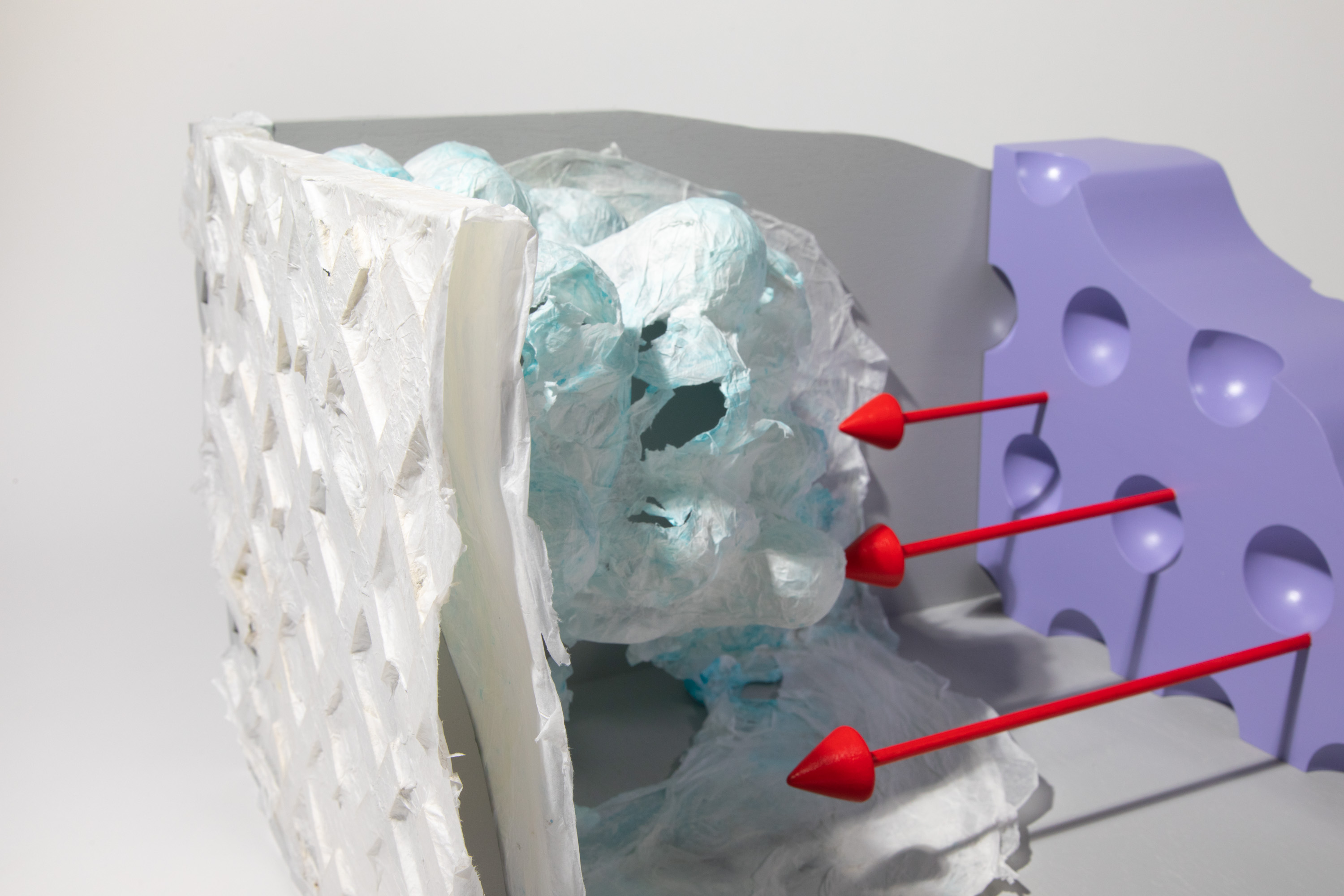
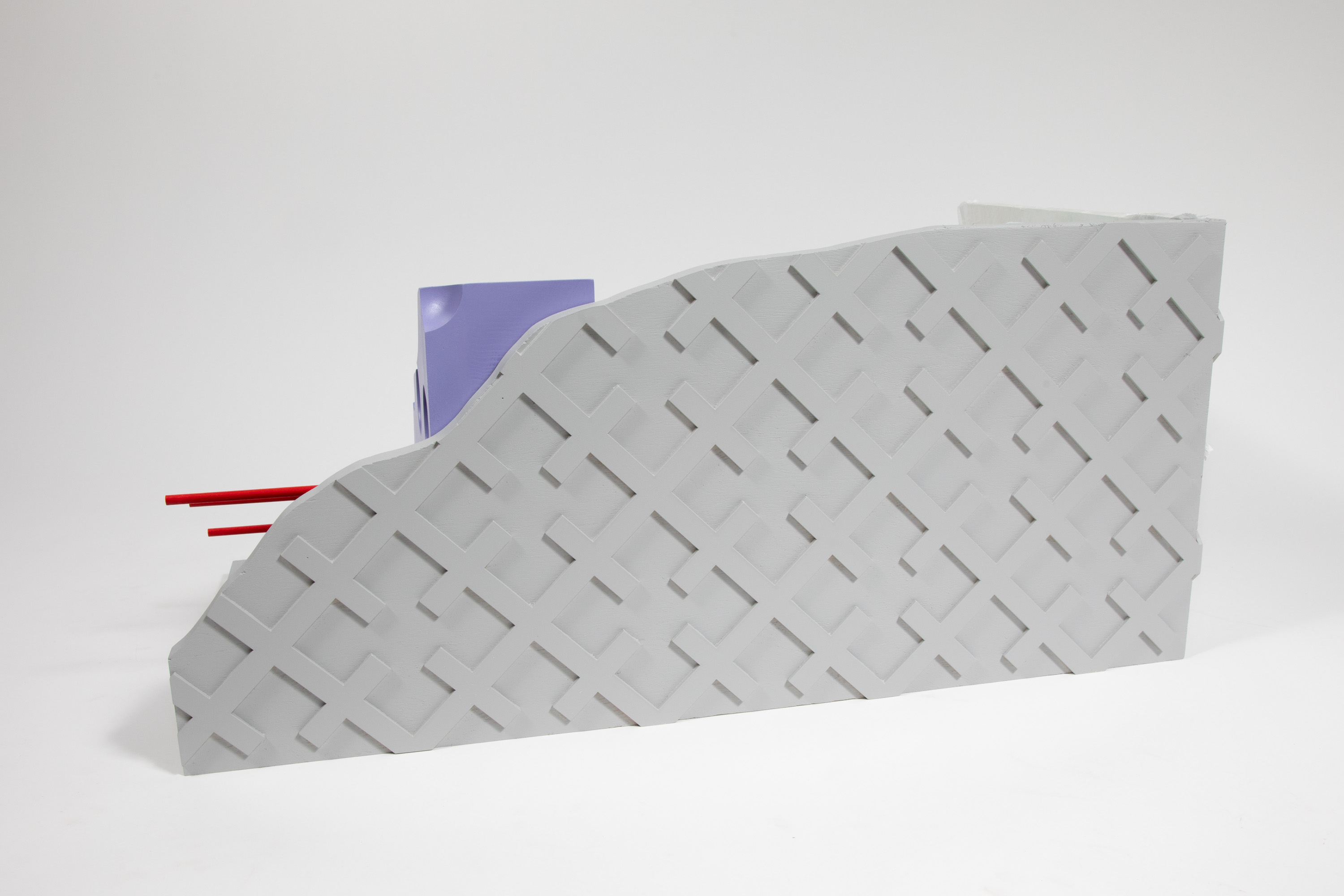

I was reading a book on the history of batteries in which the author used the terms “evolution” and “adaptation” purposefully to relate the development of battery technology to biological change. Simultaneously, an enormous proportion of the current “good news” on climate change is about battery advances. The works in this series are inspired by the little ecosystems depicted in battery diagrams. I am deconstructing, blending, and reconfiguring the them, imagining new relationships and entities and thinking about our own interconnectedness.
Finding the Right Moment
2023
Plywood, pine, MDF, spray paint, tissue paper
28 x 16 x 13 in.
The Start of a Wave
A sculpture or proposal for a monument based on a page from the Montana climate case ruling (Held v. Montana). The wave refers to the upcoming wave of global lawsuits framing climate change as a violation of fundamental human rights.


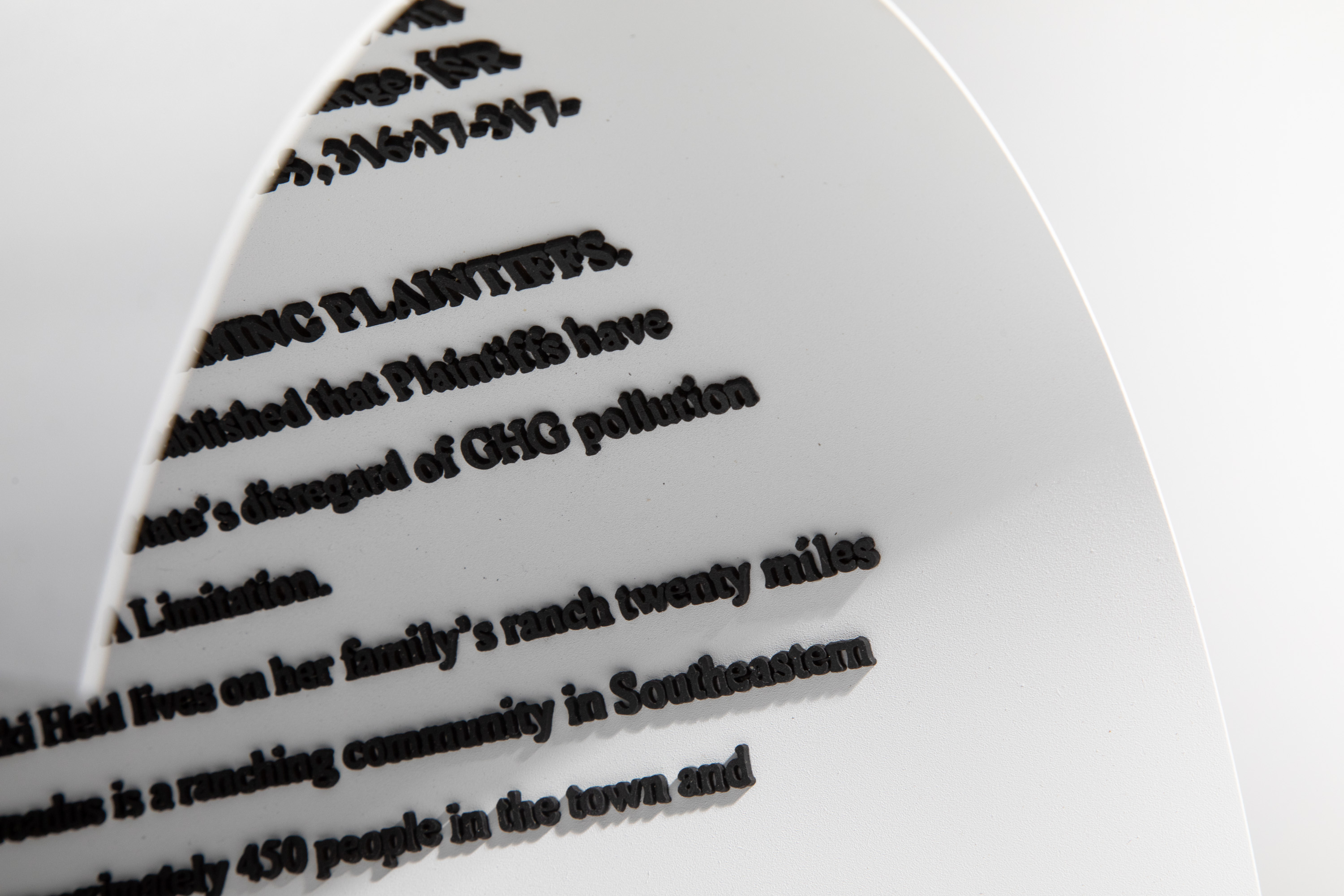
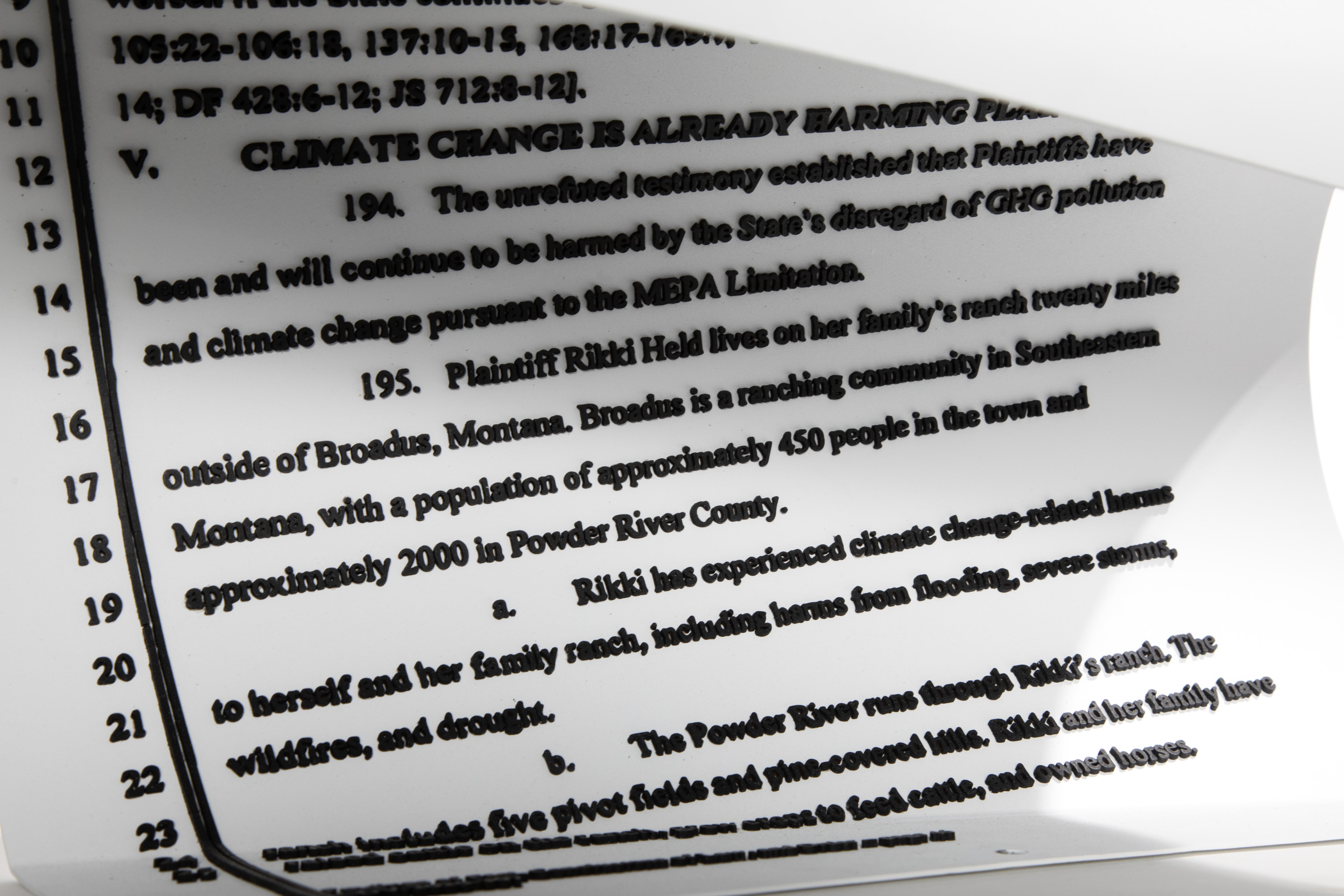

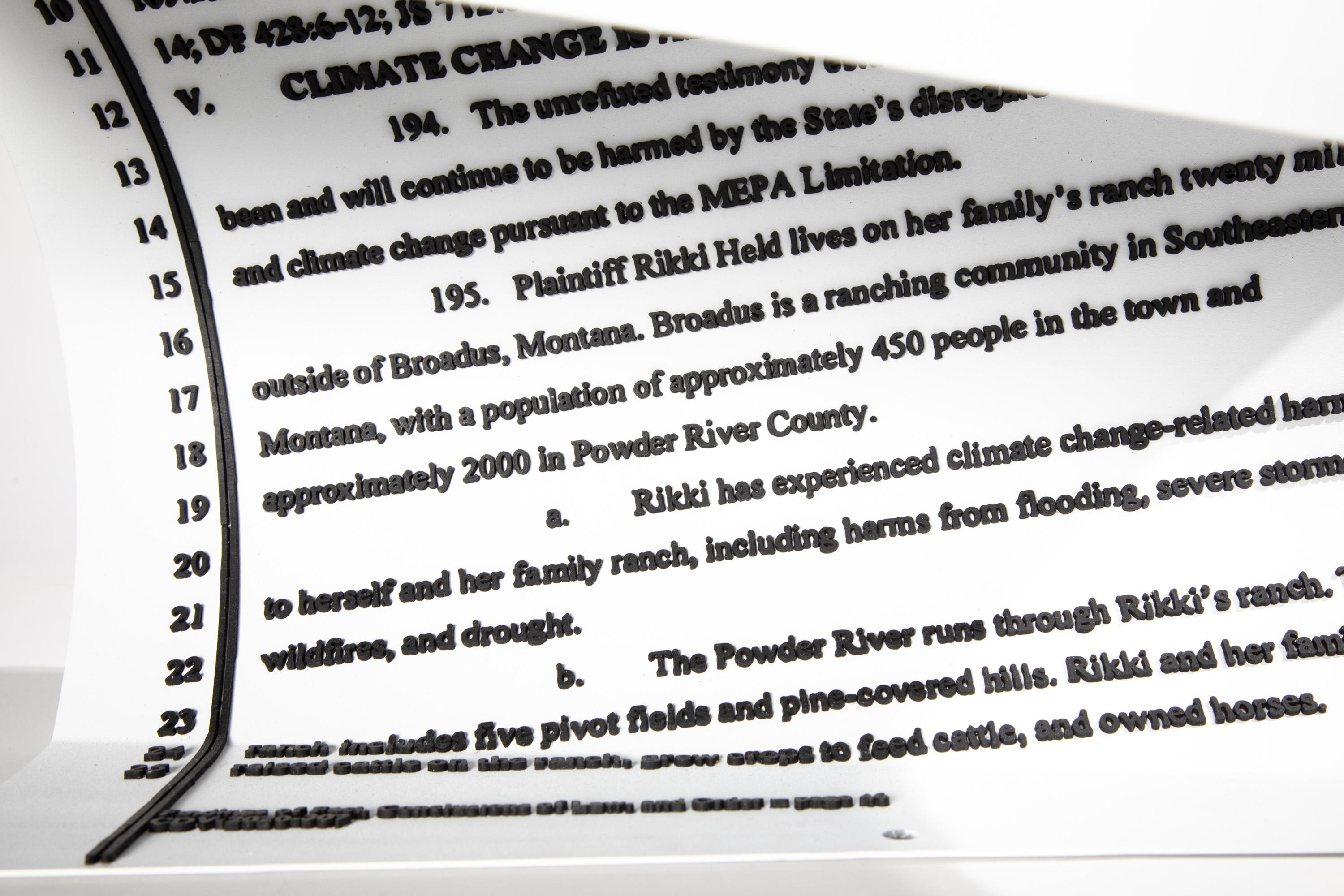
The Start of a Wave
2023
Steel, laser cut modeling board, paint
20 x 10 x 12 in.
Governors Island Residency
At Rest and In Motion was a collaborative residency project with Andrea Kastner investigating the fascinating history of Governors Island.
The island’s stunning views—of NY Harbor, lower Manhattan, and the Statue of Liberty—were the starting point from which we explored its history and possible futures. Surveying and looking became a through line for our project, and we followed this trail through the island’s history—from cannon defense lines, to beachfront officers’ homes, the industrial sublime, and even ghost sightings.

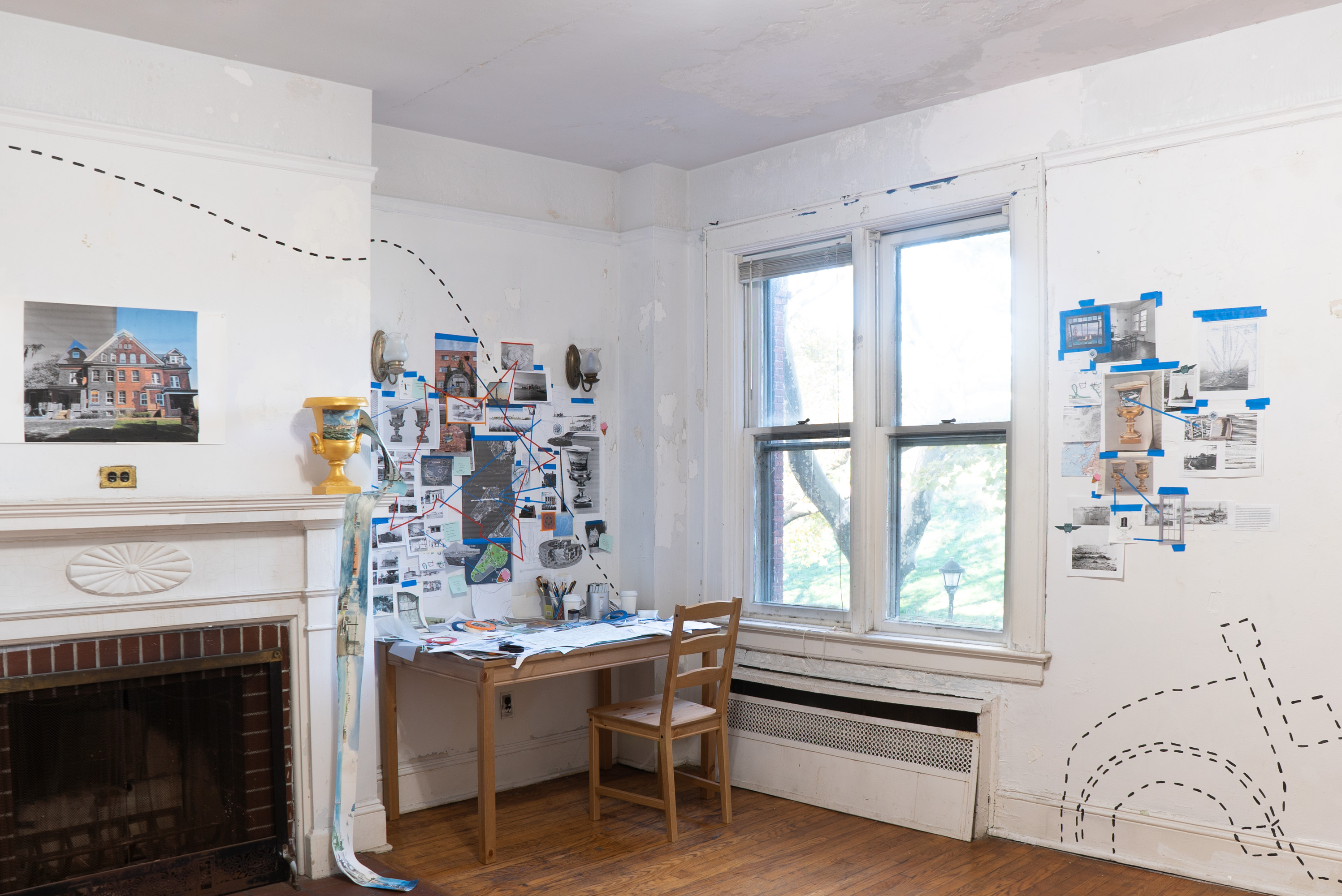
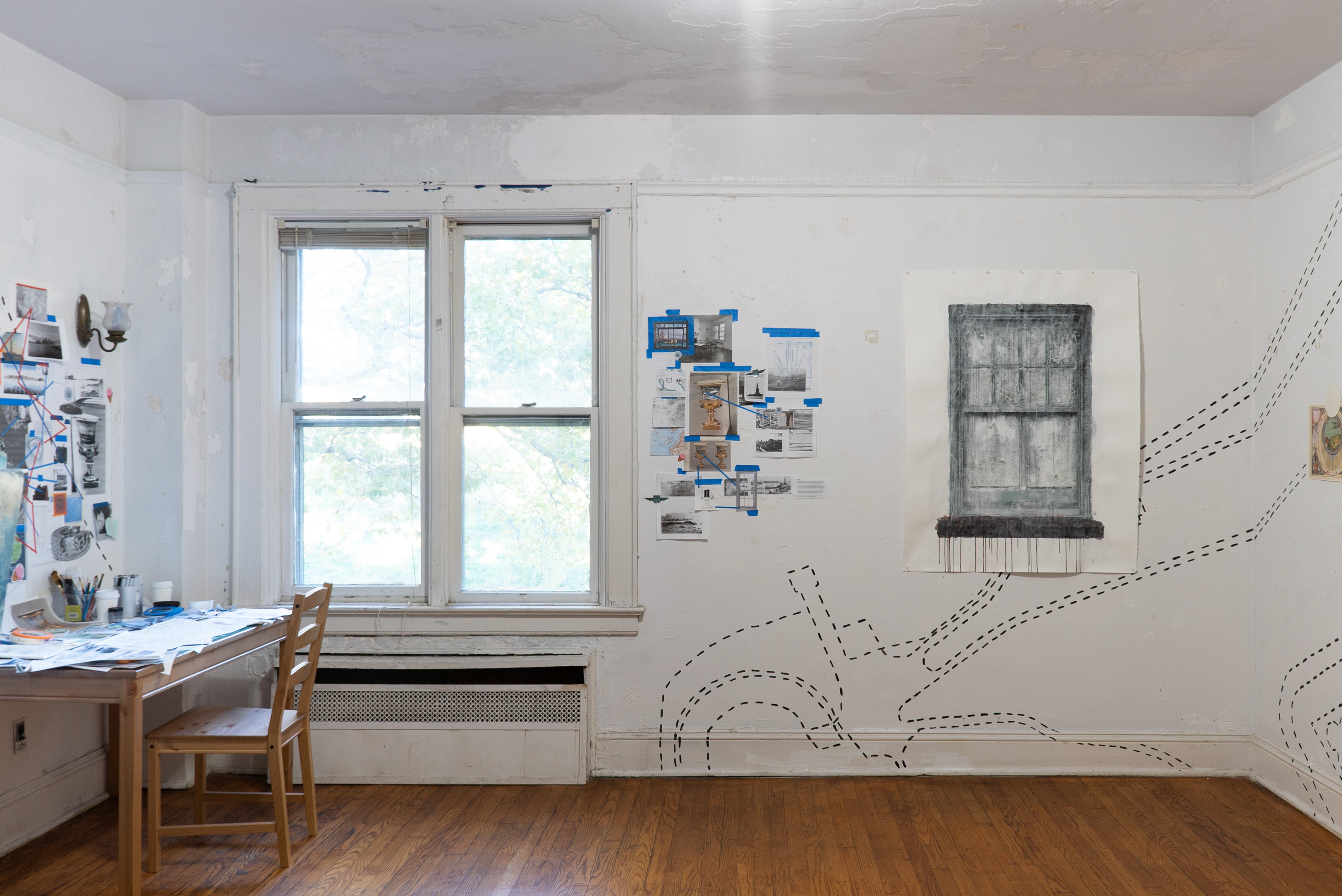




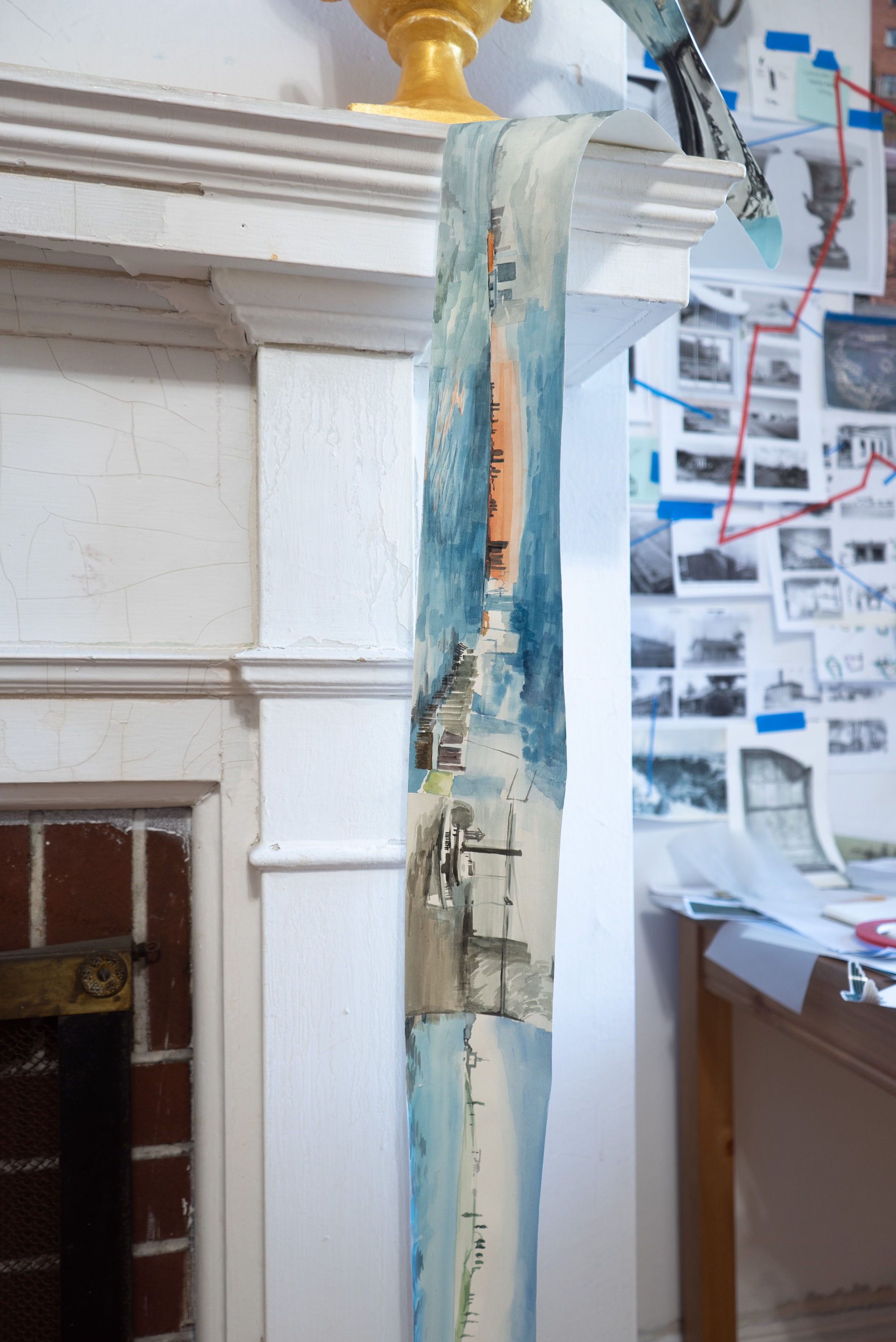
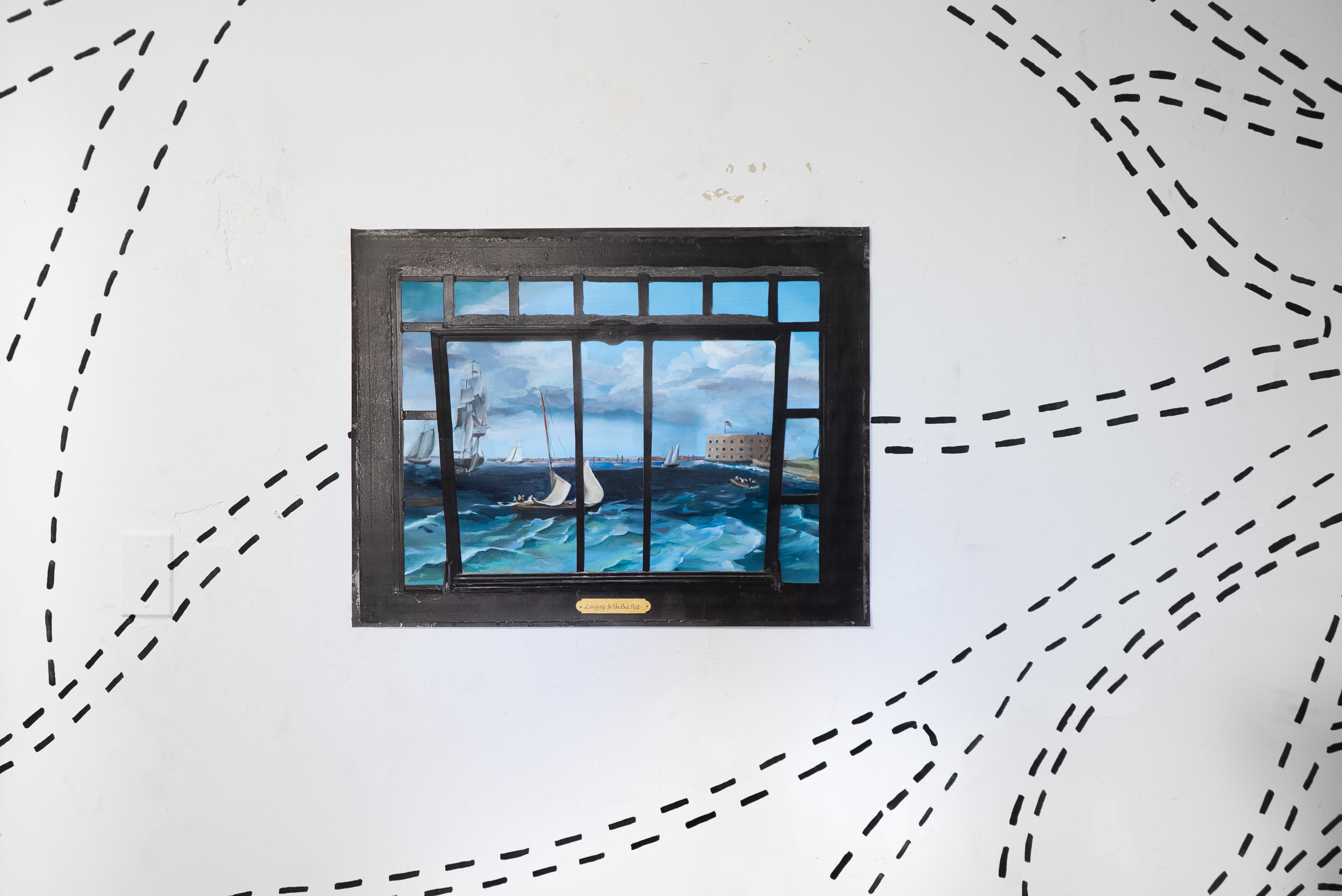
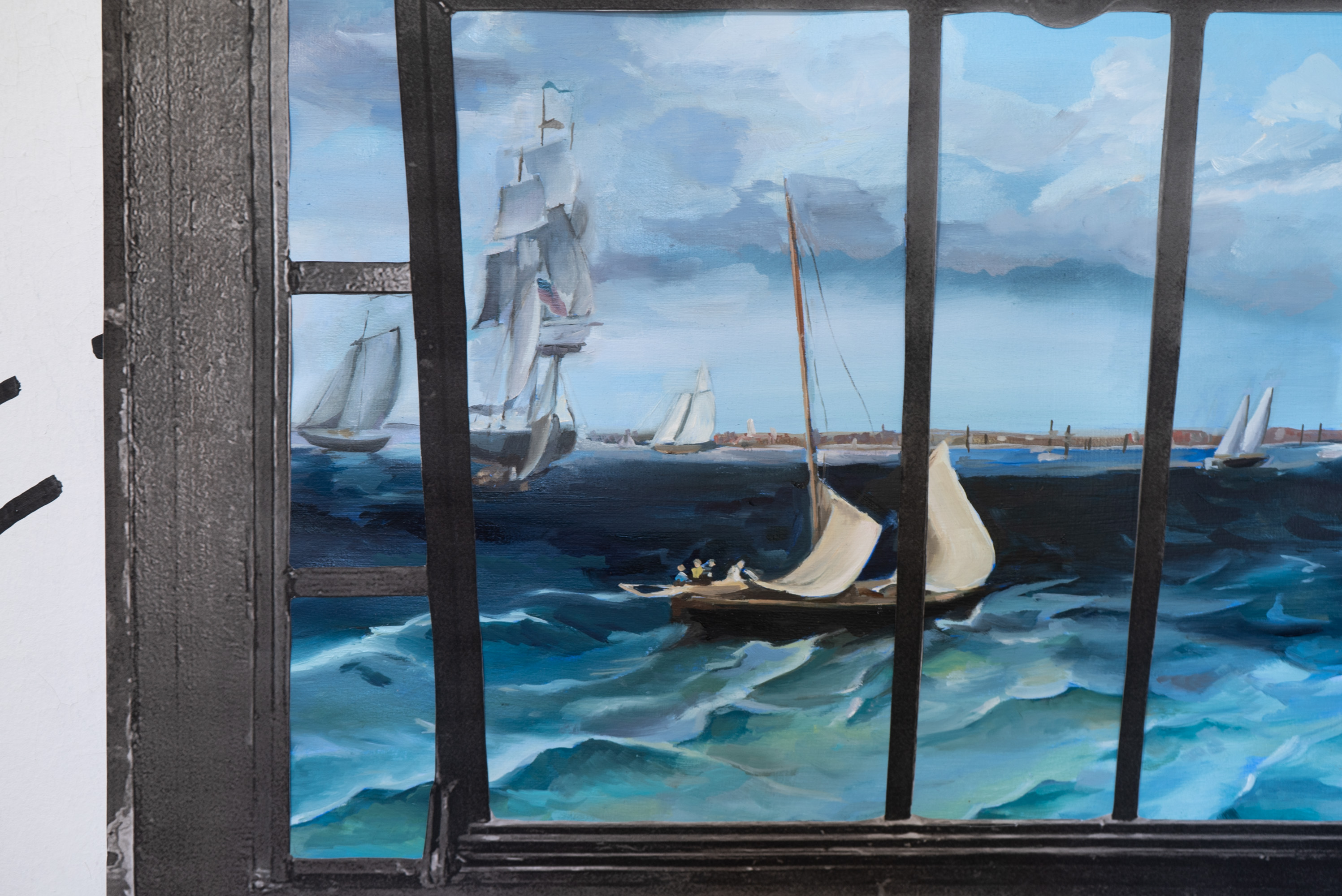
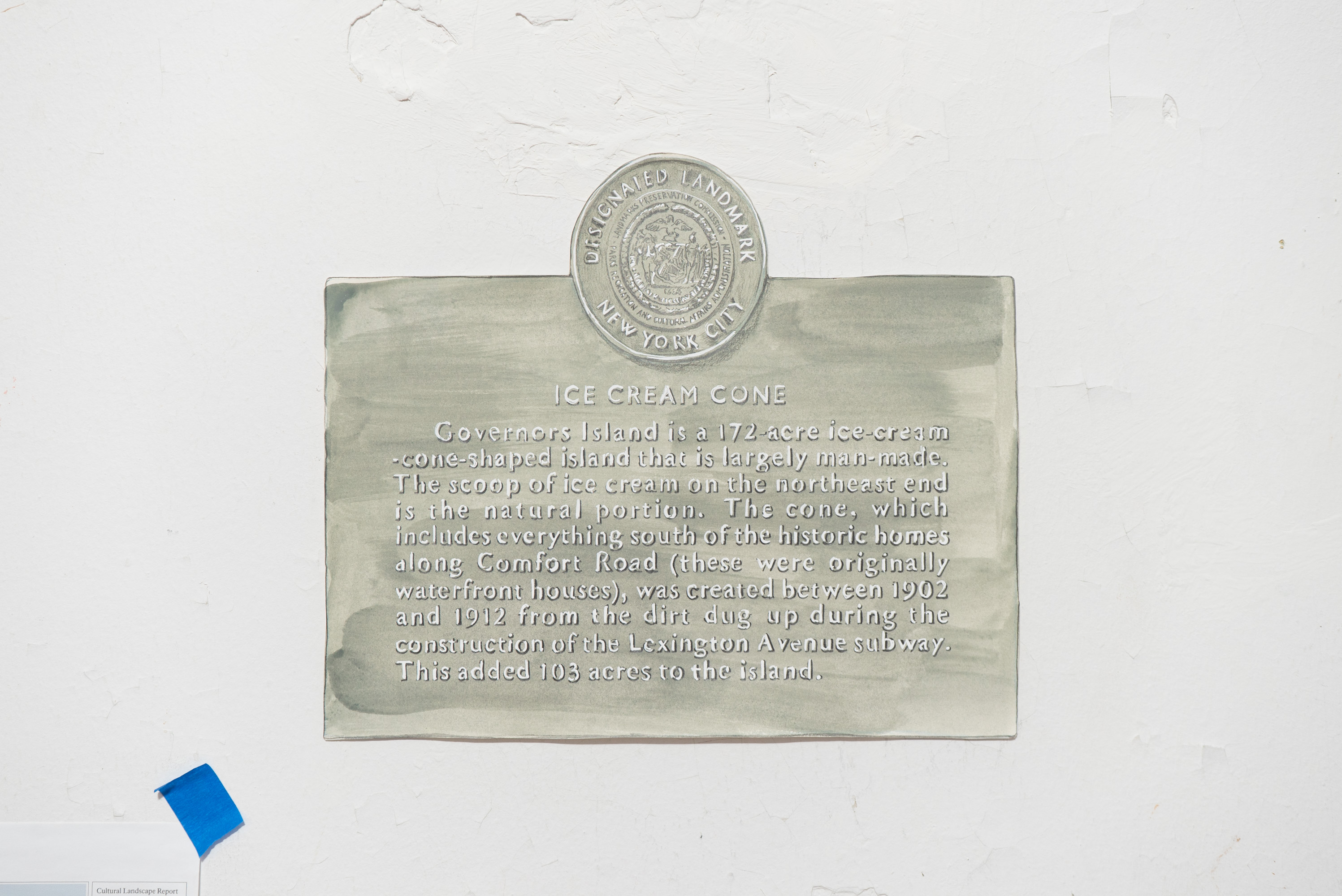
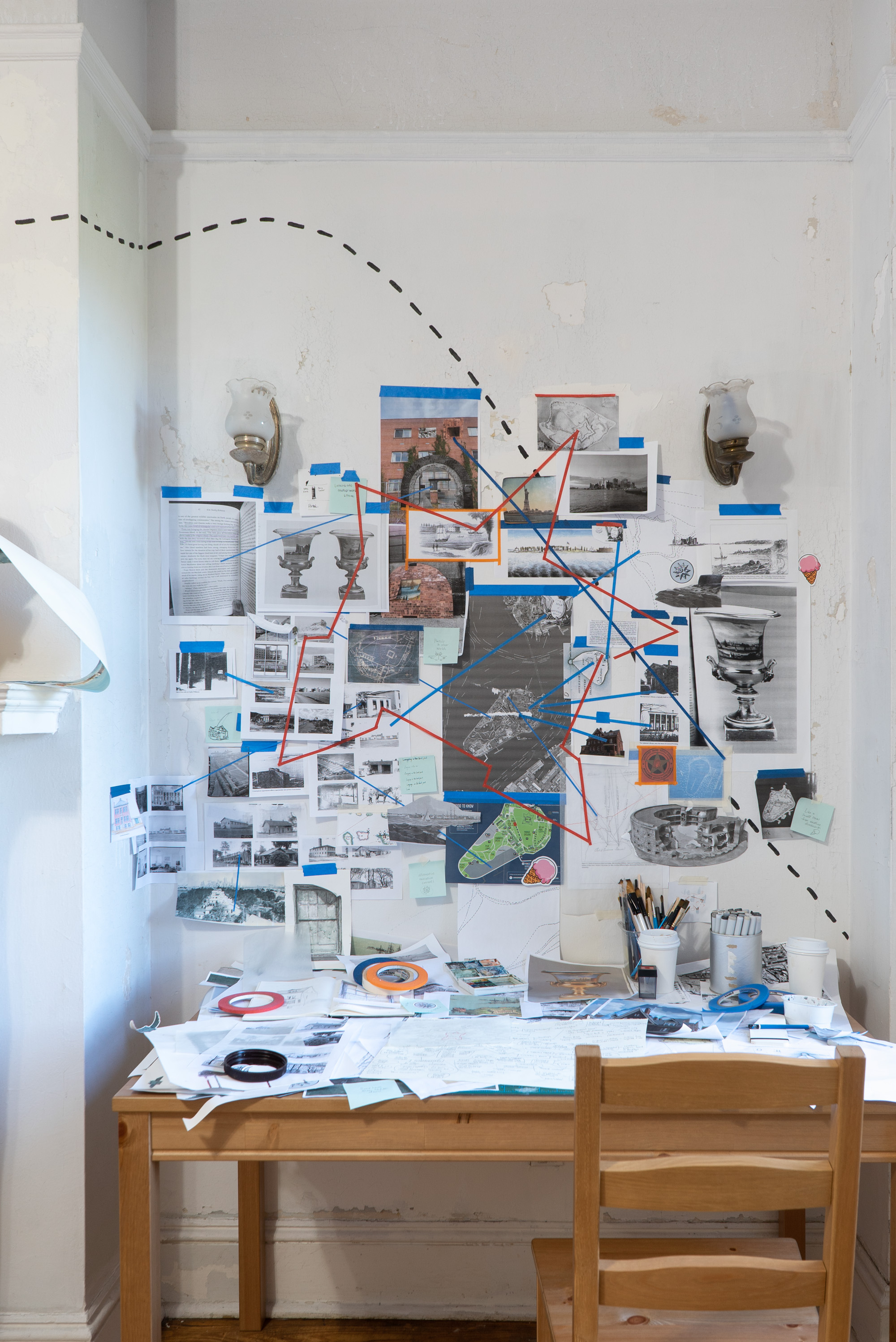
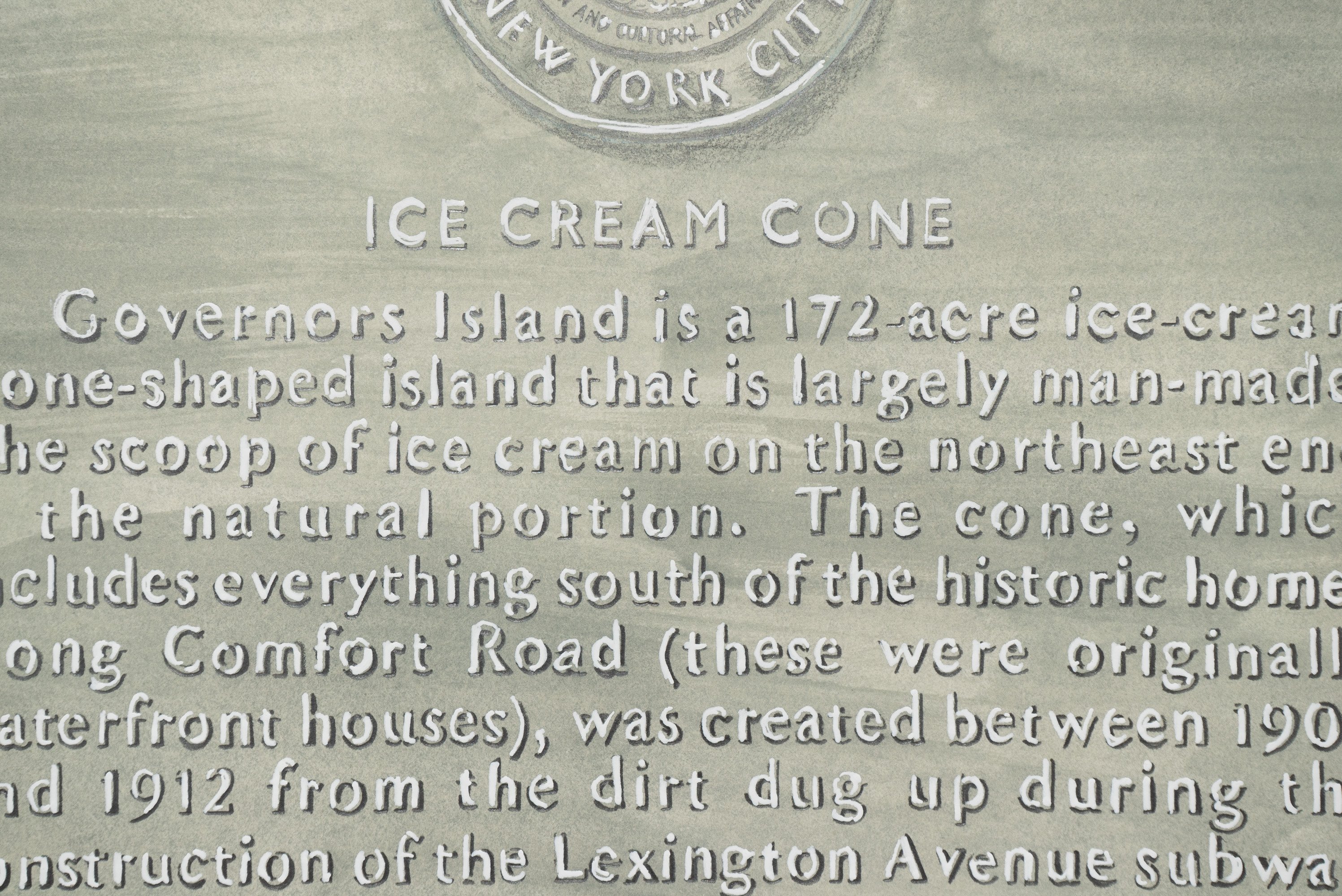





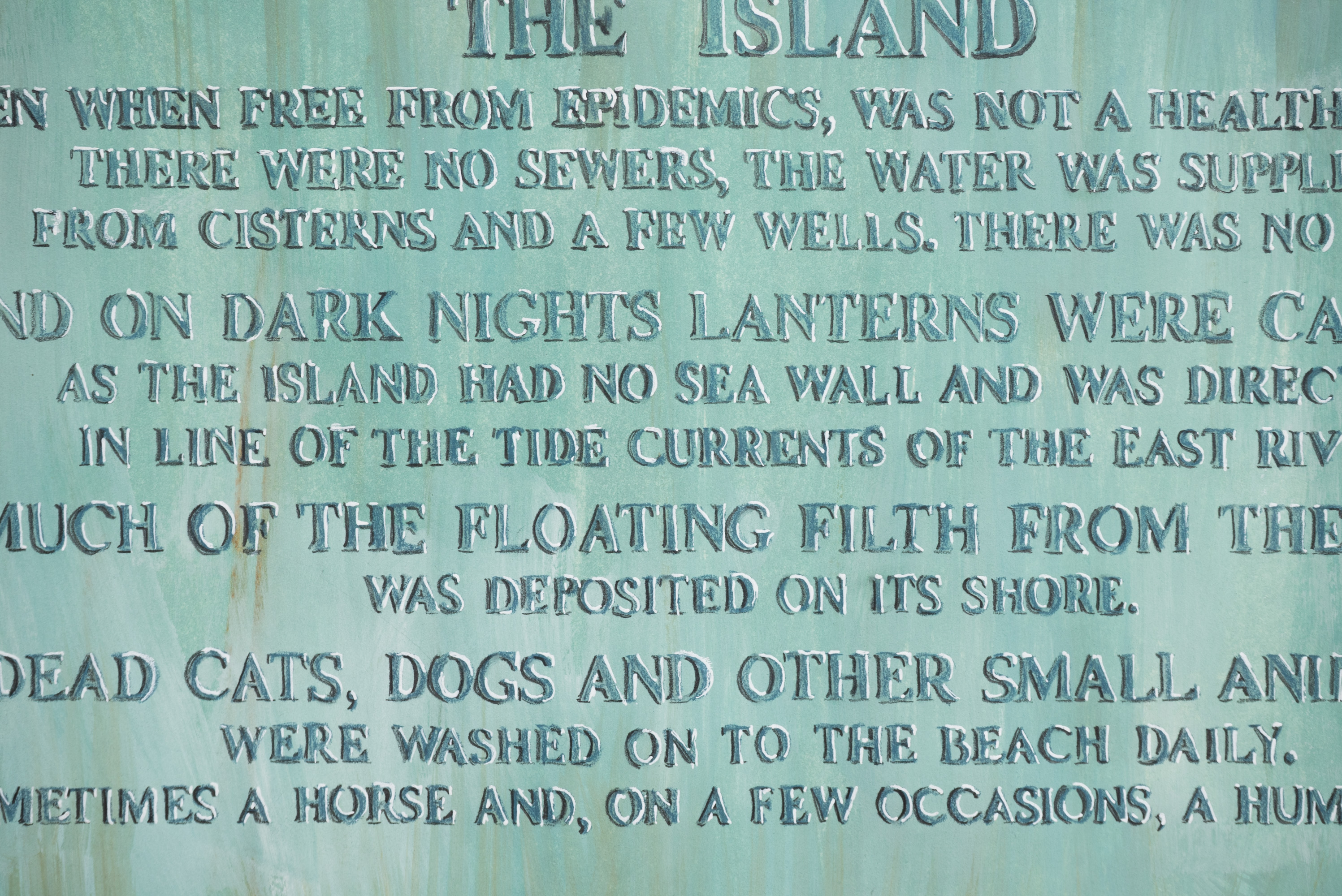
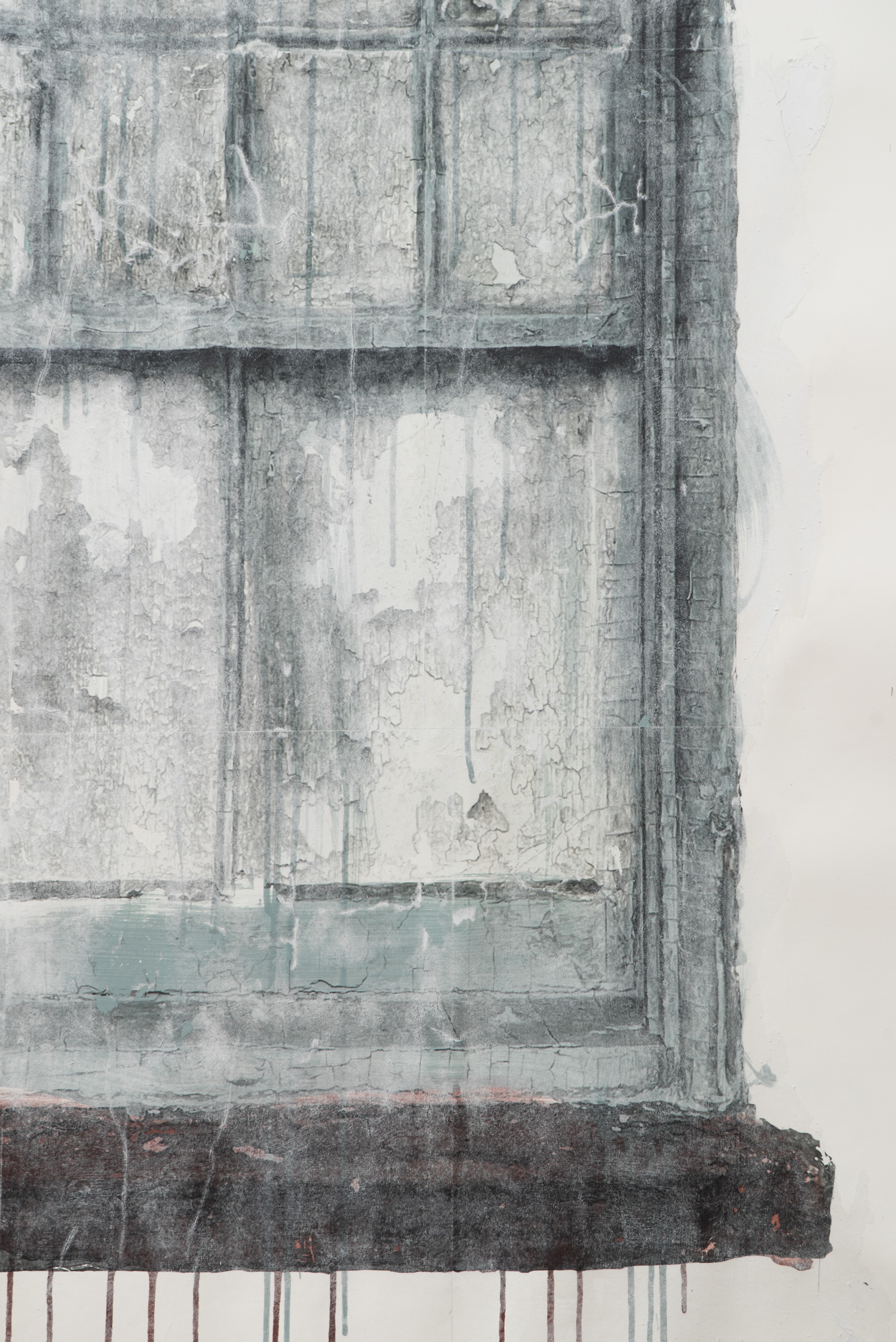
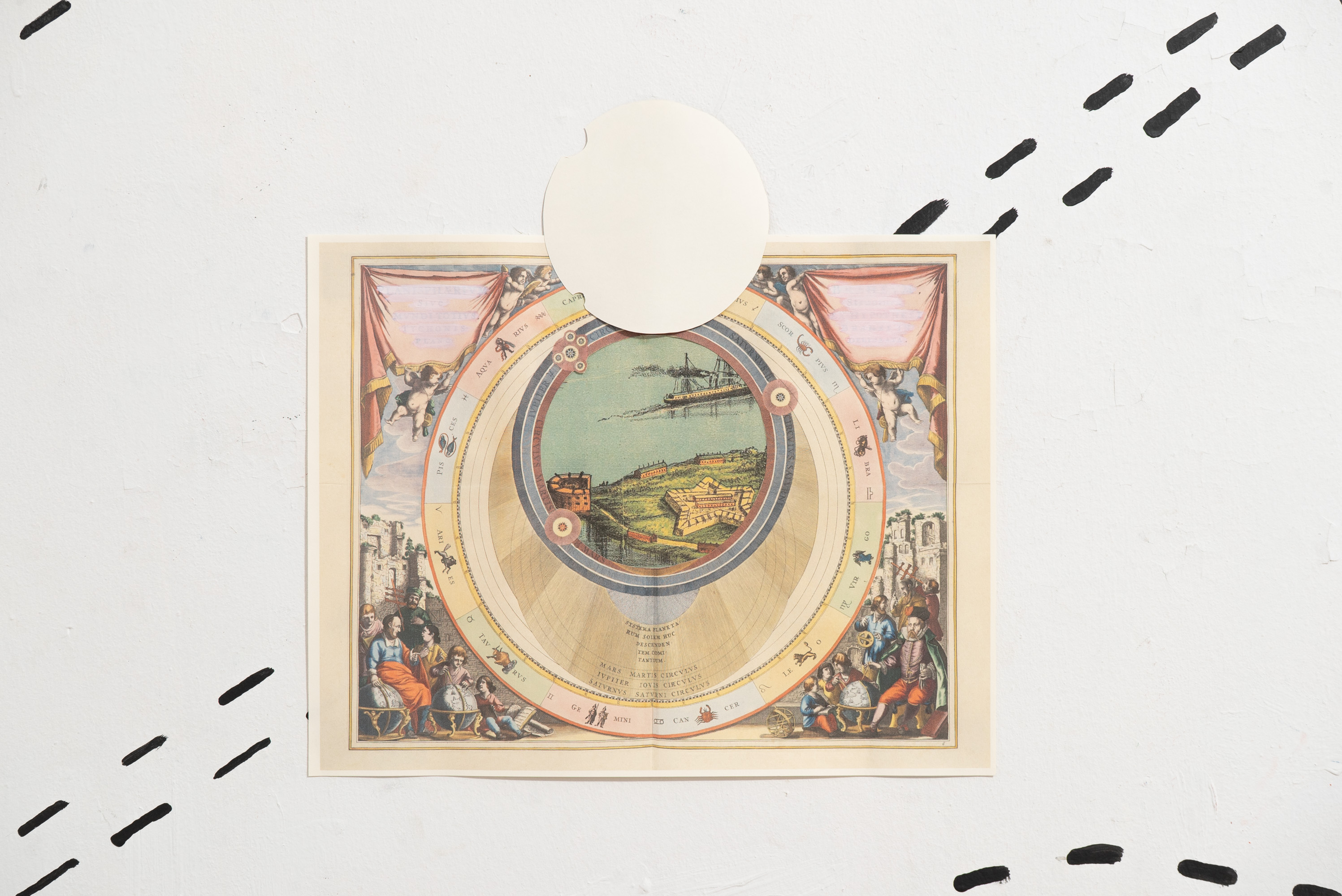
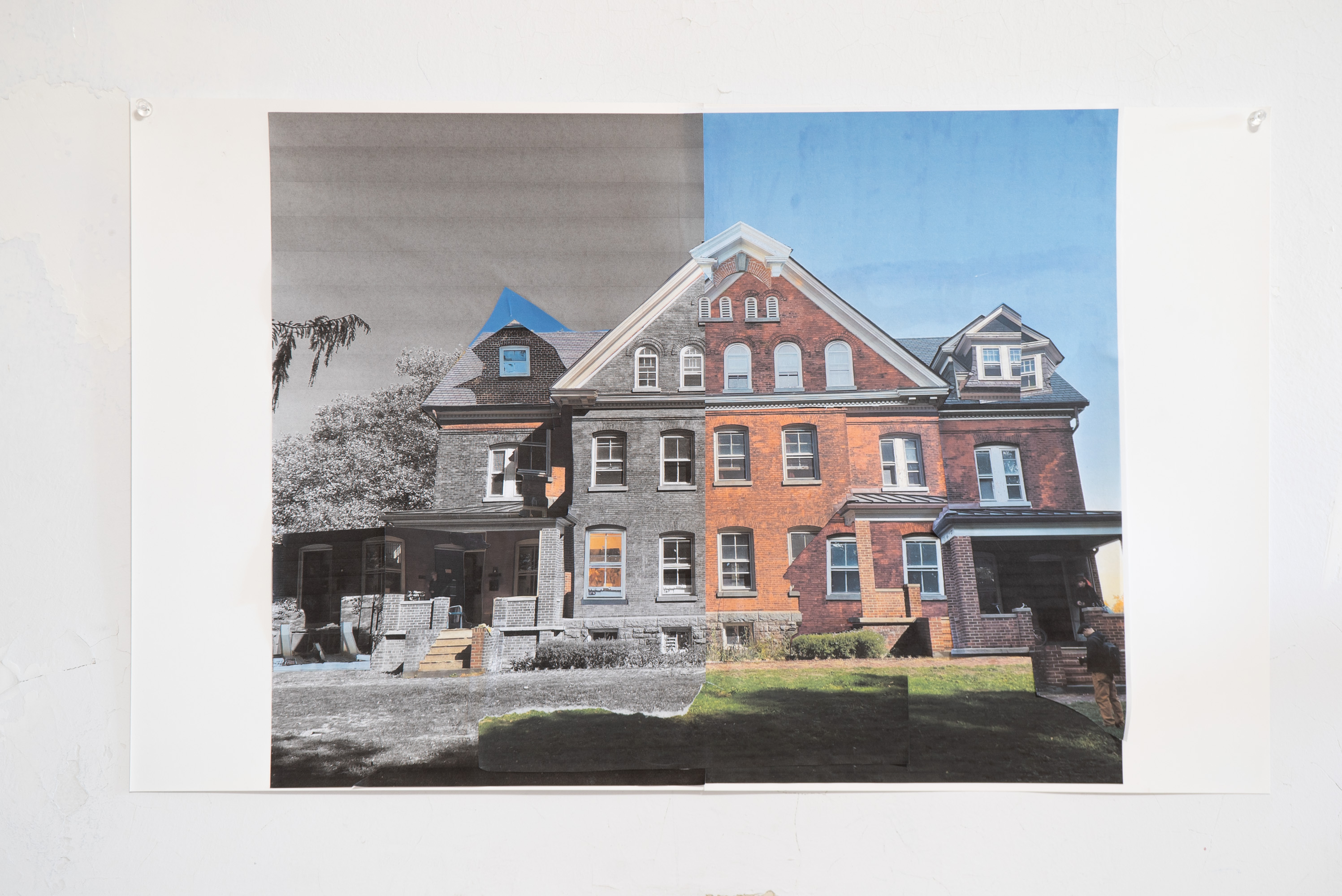
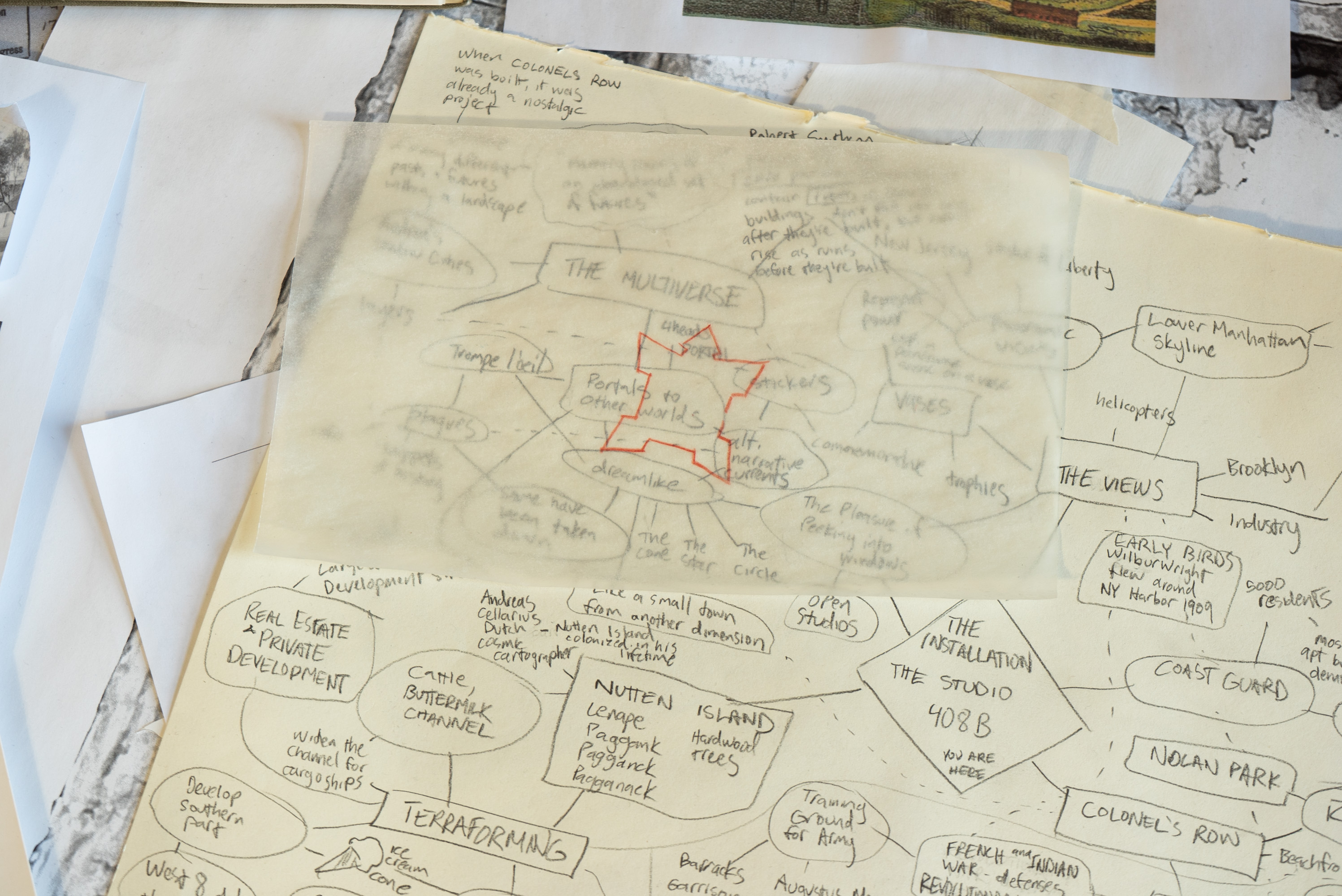

At Rest and In Motion (in collaboration with Andrea Kastner)
2022
Mixed media installation in Building 408B, Colonels’ Row, Governors Island
Dimensions variable
INSANITY MONOTONY
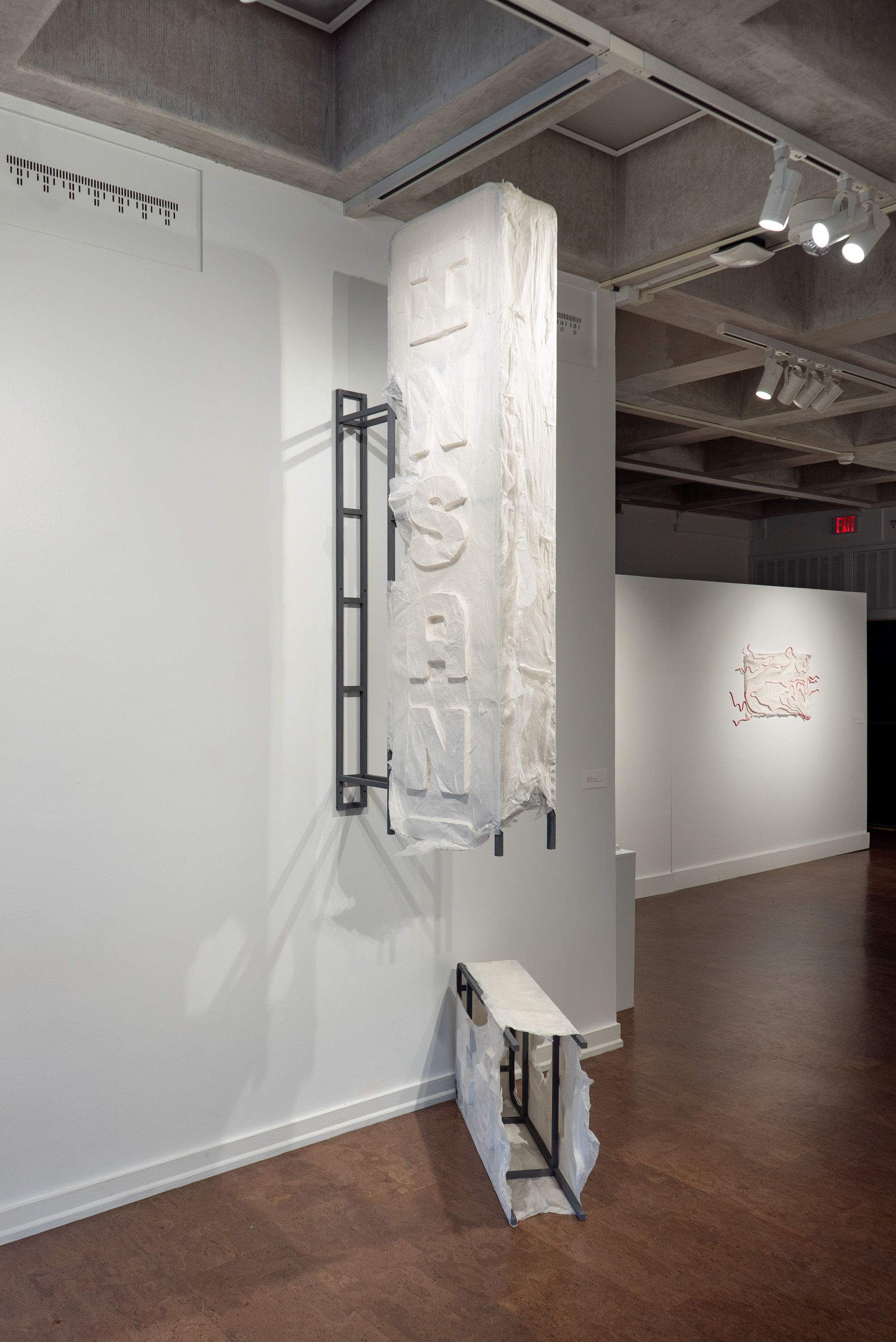

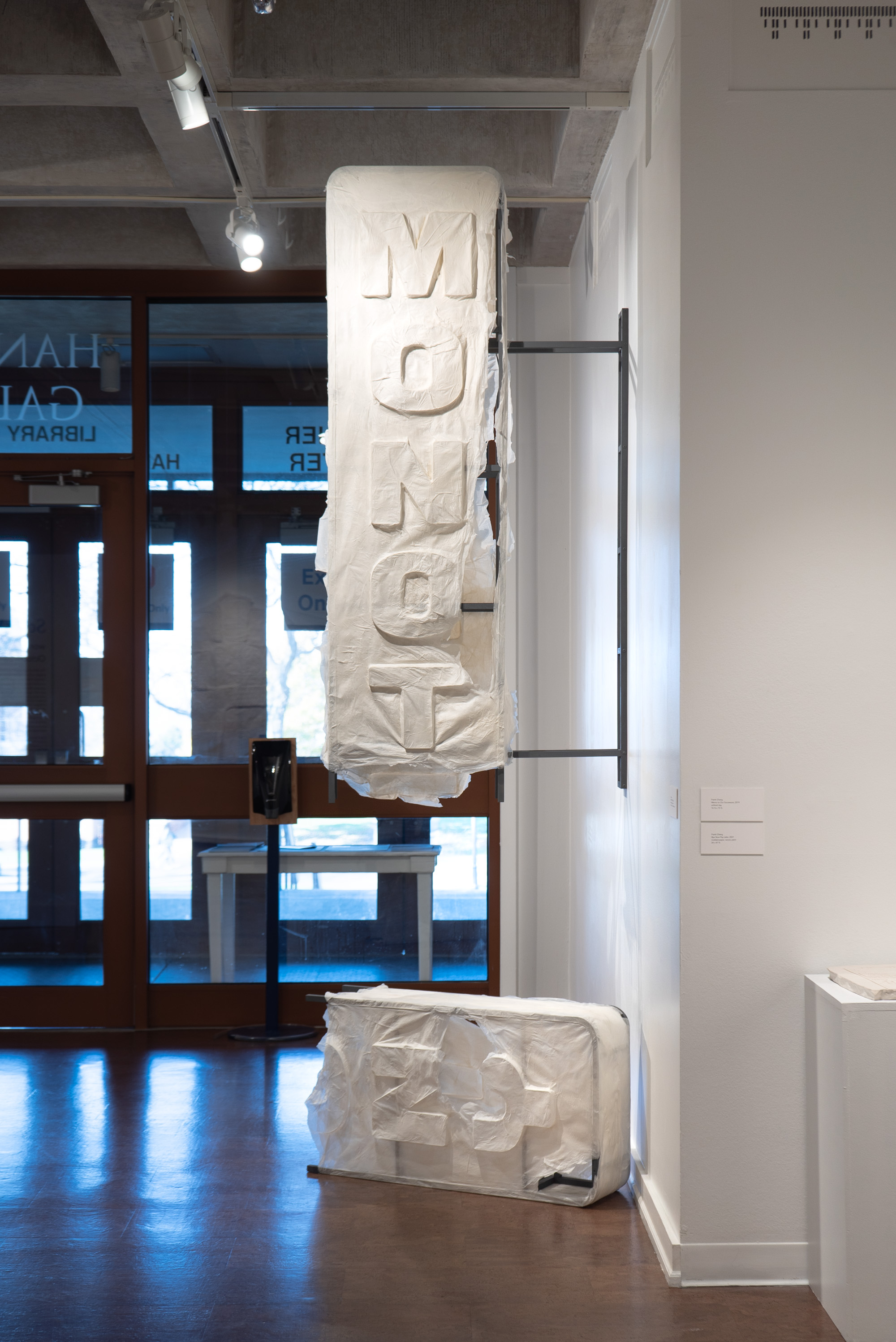

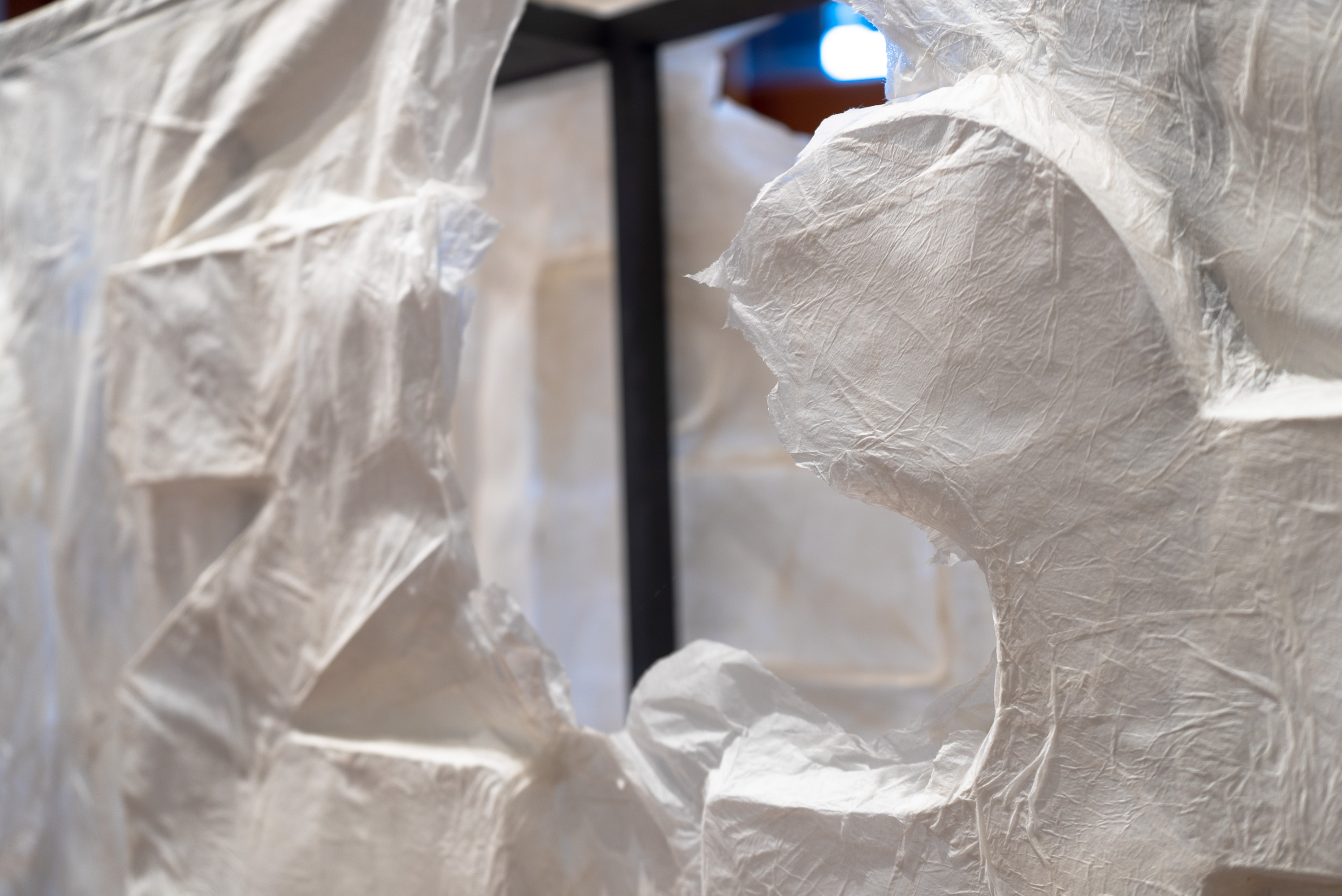
INSANITY MONOTONY
2021
Molded paper, wood, paint
Two sections, 76 x 36 x 9 in. and 38 x 21 x 9 in.
Bye Now
Pay Later
2021
Molded paper, wood, paint
47 1/2 x 24 in.
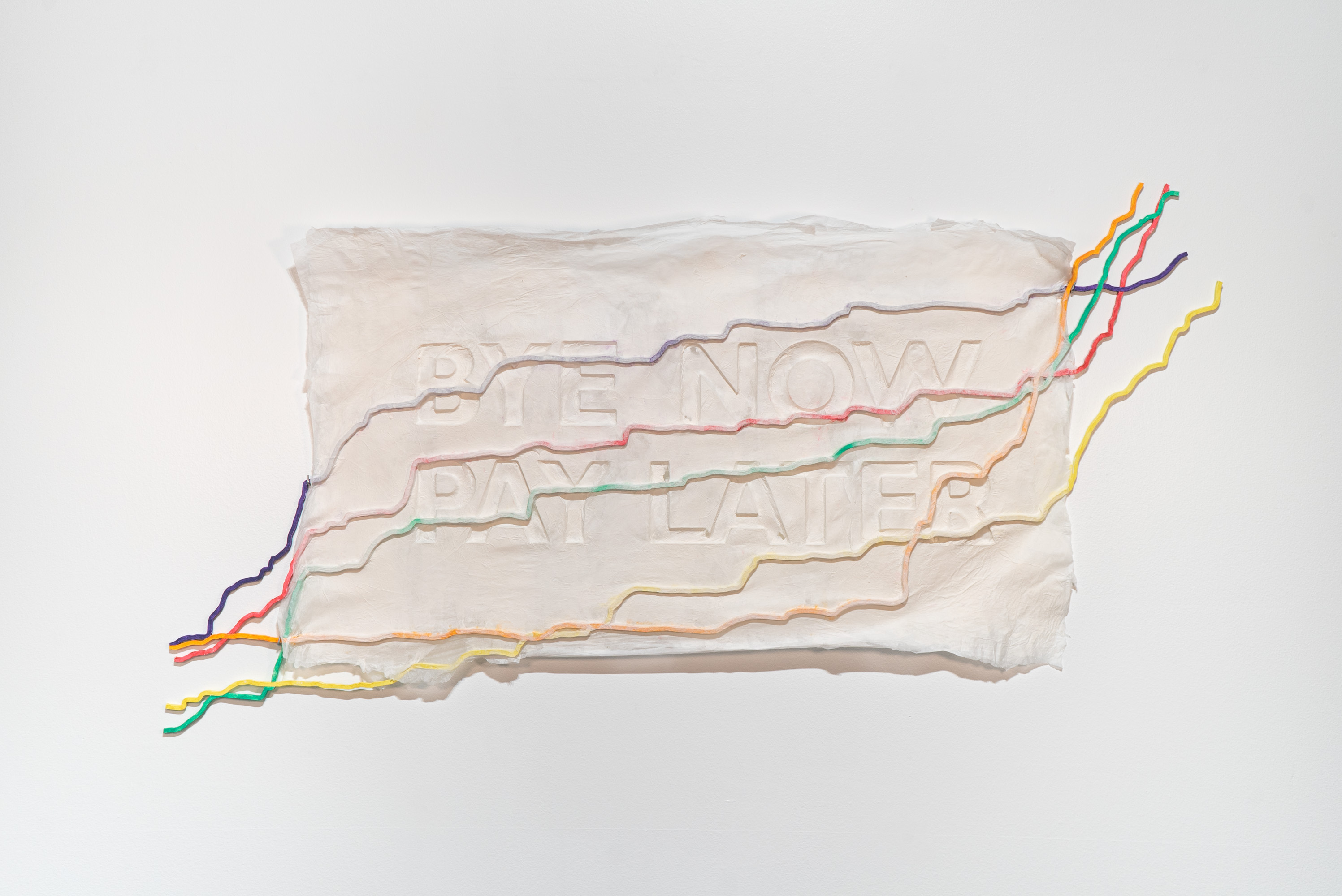
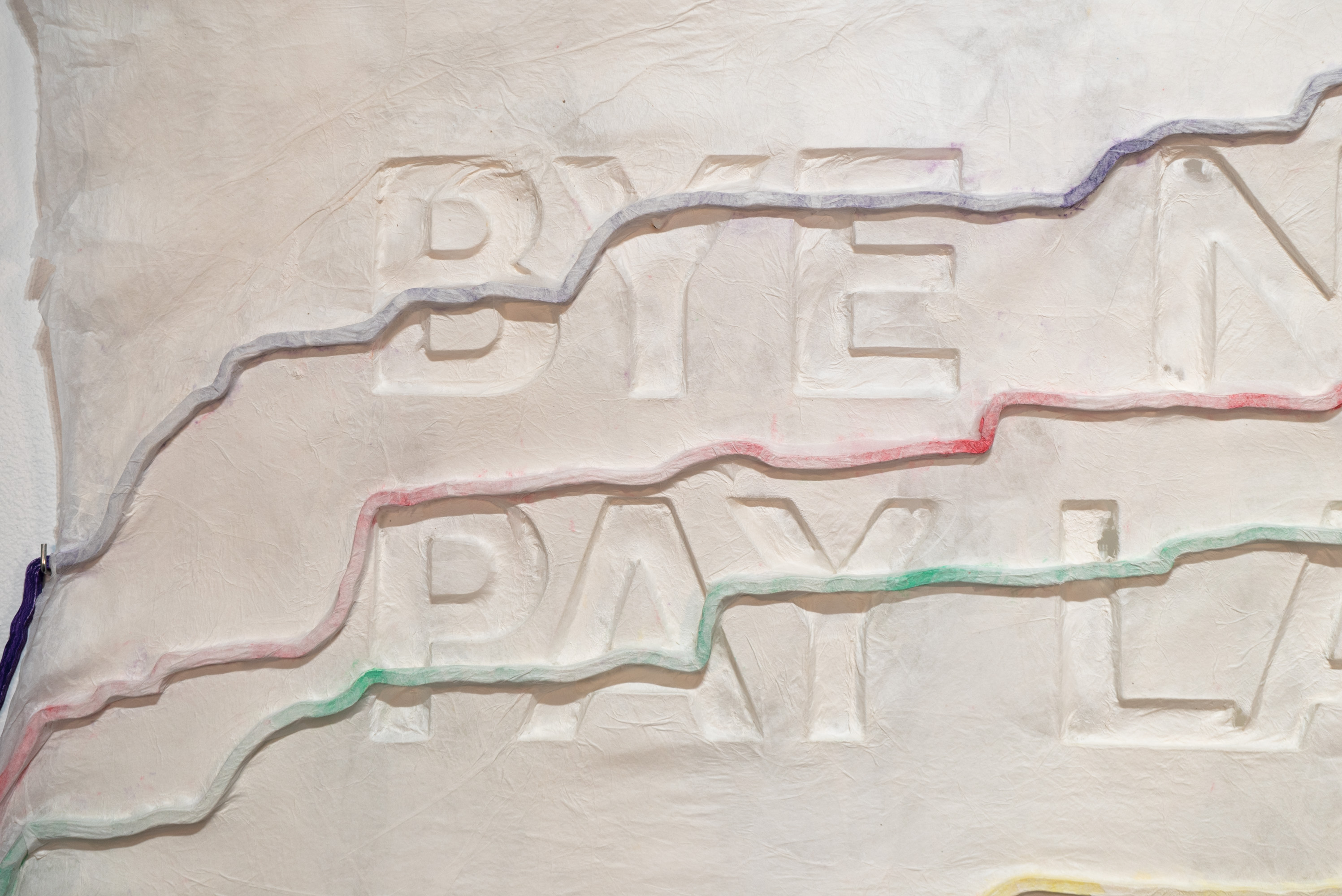
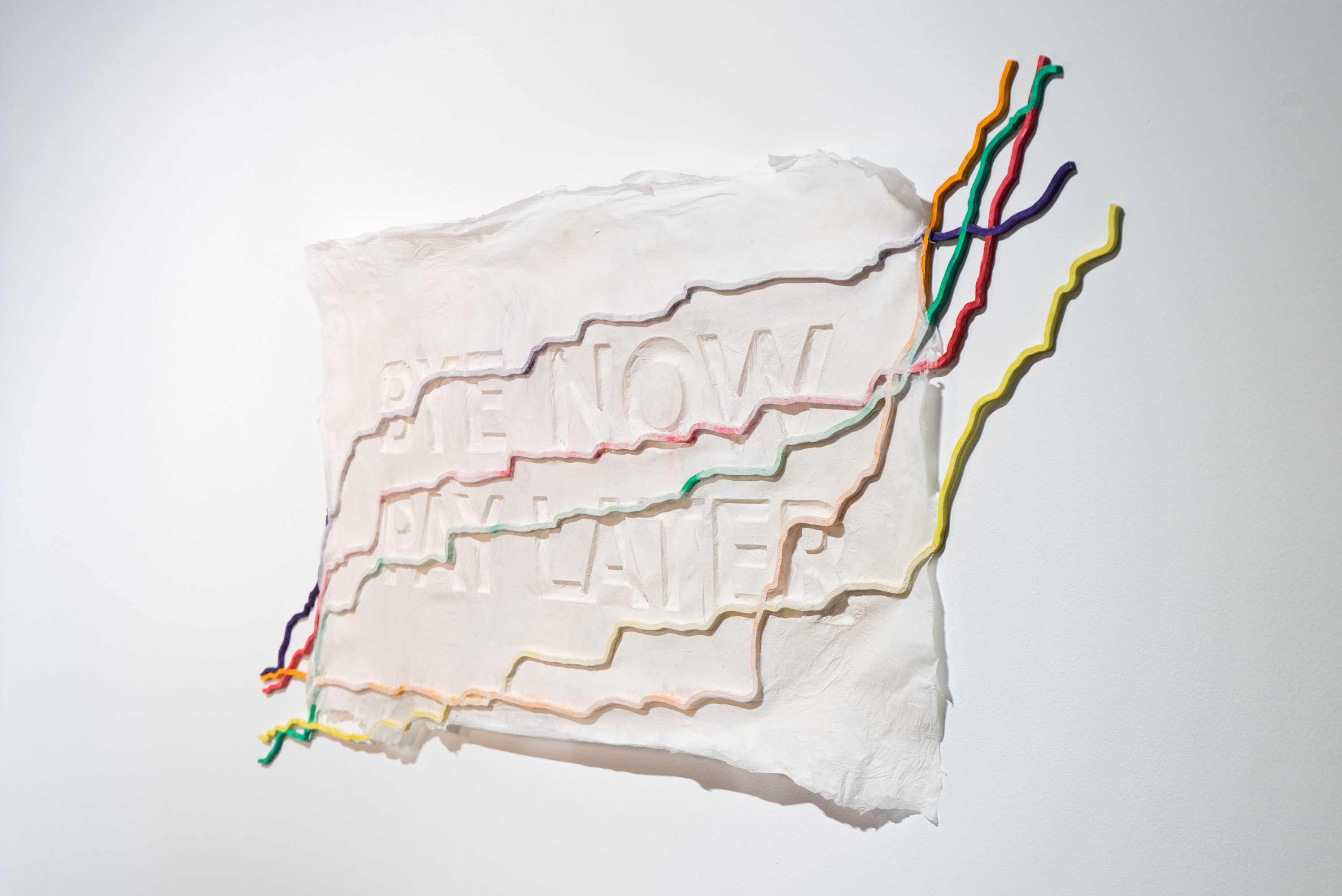
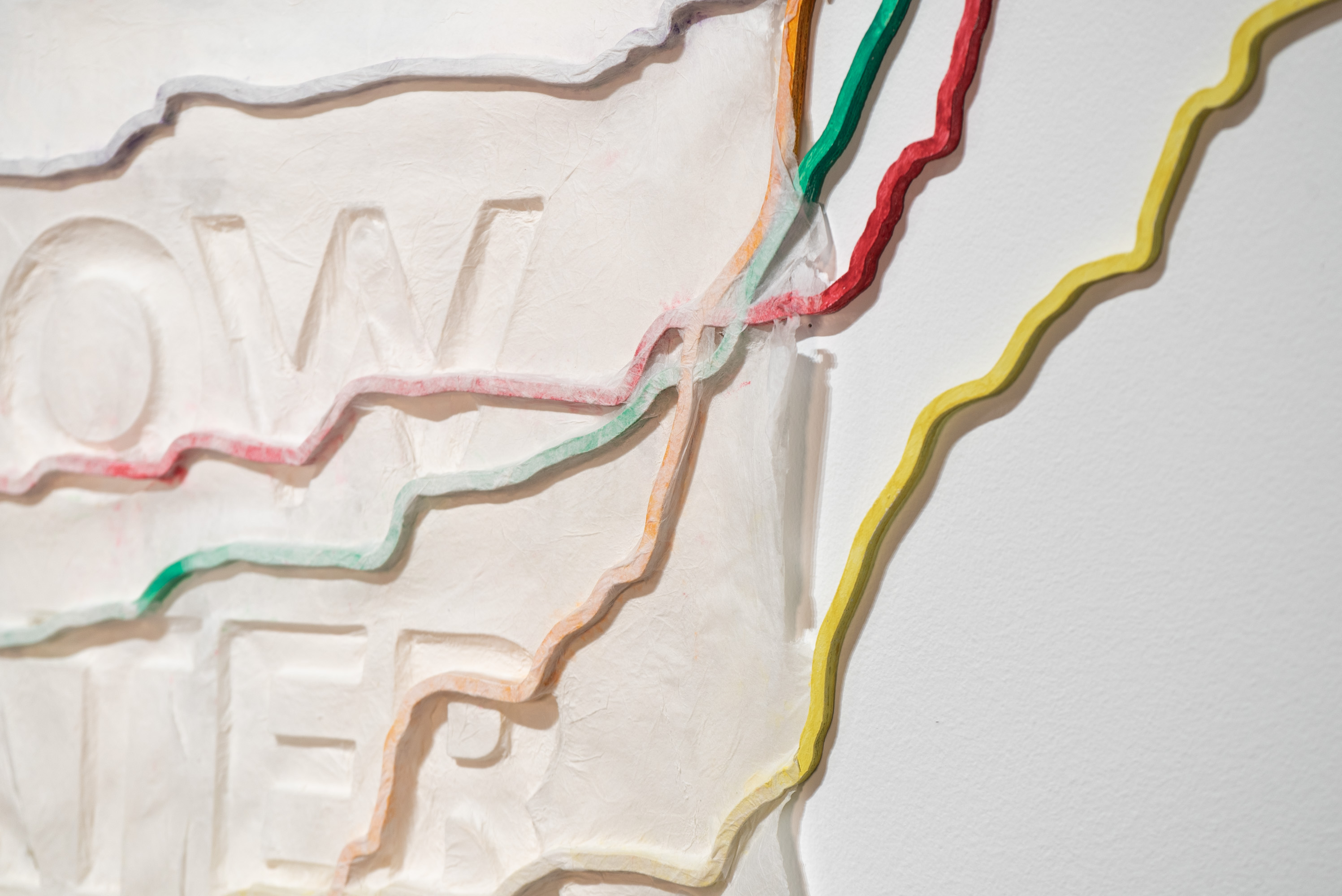
Rising
This is a rubbing of the Global Surface Temperature Index, which can be thought of as the planet’s vital signs for global warming. When global warming targets are talked about, such as limiting temperature rise to 1.5 or 2 degrees Celsius, this is the data that is referenced.
The warmest seven years on record have all been since 2015, and the warmest 20 years since 2000.

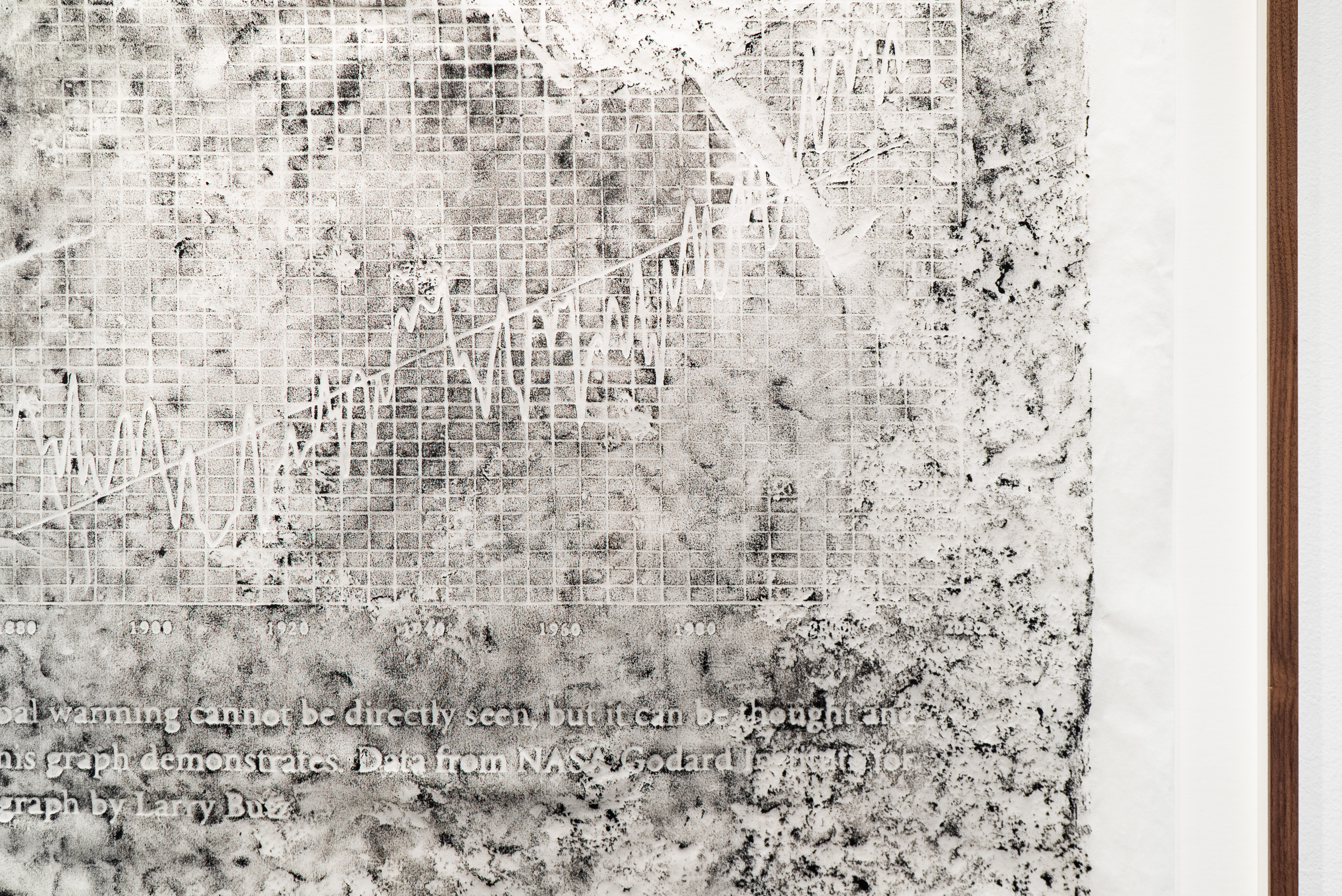
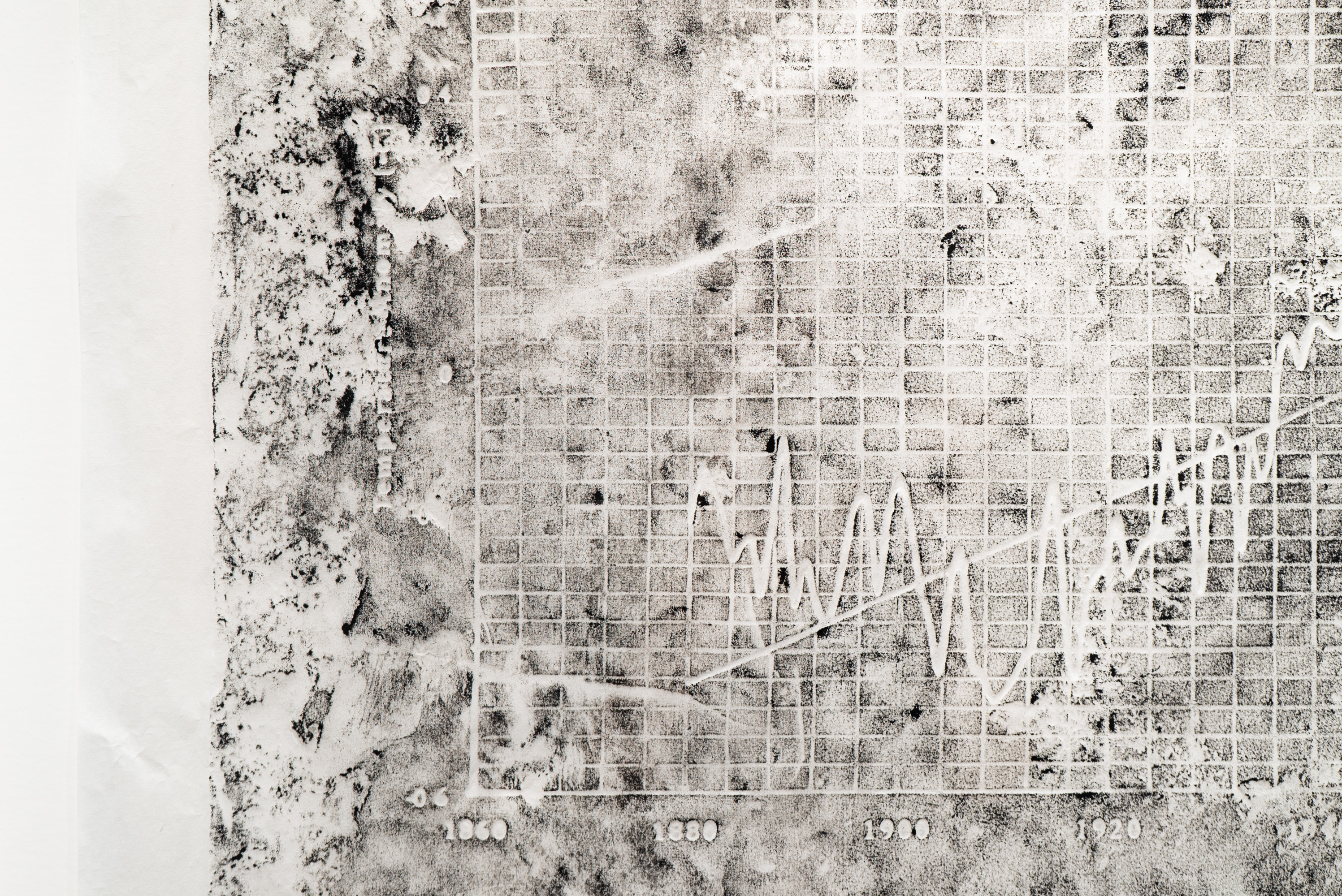
Rising
2021
Rubbing on xuan paper
34 x 27 in.
1880 -0.16 -0.09 1881 -0.08 -0.13 1882 -0.11 -0.16 1883 -0.17 -0.20 1884 -0.28 -0.24 1885 -0.33 -0.26 1886 -0.31 -0.27 1887 -0.36 -0.27 1888 -0.17 -0.26 1889 -0.10 -0.25 1890 -0.35 -0.25 1891 -0.22 -0.25 1892 -0.27 -0.26 1893 -0.31 -0.26 1894 -0.30 -0.23 1895 -0.22 -0.22 1896 -0.11 -0.20 1897 -0.10 -0.18 1898 -0.27 -0.16 1899 -0.17 -0.17 1900 -0.08 -0.20 1901 -0.15 -0.23 1902 -0.28 -0.26 1903 -0.37 -0.28 1904 -0.46 -0.31 1905 -0.26 -0.34 1906 -0.22 -0.36 1907 -0.38 -0.37 1908 -0.42 -0.39 1909 -0.48 -0.40 1910 -0.43 -0.41 1911 -0.43 -0.38 1912 -0.35 -0.34 1913 -0.34 -0.32 1914 -0.15 -0.30 1915 -0.13 -0.30 1916 -0.35 -0.29 1917 -0.46 -0.29 1918 -0.29 -0.29 1919 -0.27 -0.29 1920 -0.27 -0.27 1921 -0.19 -0.26 1922 -0.28 -0.25 1923 -0.26 -0.24 1924 -0.27 -0.23 1925 -0.22 -0.22 1926 -0.10 -0.21 1927 -0.21 -0.21 1928 -0.20 -0.19 1929 -0.36 -0.19 1930 -0.15 -0.19 1931 -0.09 -0.19 1932 -0.16 -0.18 1933 -0.29 -0.17 1934 -0.12 -0.16 1935 -0.20 -0.14 1936 -0.15 -0.11 1937 -0.03 -0.06 1938 0.00 -0.01 1939 -0.02 0.03 1940 0.13 0.06 1941 0.19 0.09 1942 0.07 0.11 1943 0.09 0.10 1944 0.20 0.07 1945 0.09 0.04 1946 -0.07 0.00 1947 -0.03 -0.04 1948 -0.11 -0.07 1949 -0.11 -0.08 1950 -0.18 -0.08 1951 -0.07 -0.07 1952 0.01 -0.07 1953 0.08 -0.07 1954 -0.13 -0.07 1955 -0.14 -0.06 1956 -0.19 -0.05 1957 0.05 -0.04 1958 0.06 -0.01 1959 0.03 0.01 1960 -0.03 0.03 1961 0.06 0.01 1962 0.03 -0.01 1963 0.05 -0.03 1964 -0.20 -0.04 1965 -0.11 -0.05 1966 -0.06 -0.06 1967 -0.02 -0.05 1968 -0.08 -0.03 1969 0.05 -0.02 1970 0.03 -0.00 1971 -0.08 0.00 1972 0.01 0.00 1973 0.16 -0.00 1974 -0.07 0.01 1975 -0.01 0.02 1976 -0.10 0.04 1977 0.18 0.08 1978 0.07 0.12 1979 0.17 0.17 1980 0.26 0.20 1981 0.32 0.21 1982 0.14 0.22 1983 0.31 0.21 1984 0.16 0.21 1985 0.12 0.22 1986 0.18 0.24 1987 0.32 0.27 1988 0.39 0.31 1989 0.27 0.33 1990 0.45 0.33 1991 0.41 0.33 1992 0.22 0.33 1993 0.23 0.33 1994 0.32 0.34 1995 0.45 0.37 1996 0.33 0.40 1997 0.46 0.42 1998 0.61 0.44 1999 0.38 0.47 2000 0.39 0.50 2001 0.53 0.52 2002 0.63 0.55 2003 0.62 0.58 2004 0.53 0.61 2005 0.68 0.62 2006 0.63 0.62 2007 0.66 0.63 2008 0.54 0.64 2009 0.65 0.64 2010 0.72 0.64 2011 0.61 0.66 2012 0.64 0.69 2013 0.67 0.74 2014 0.74 0.78 2015 0.90 0.83 2016 1.02 0.87 2017 0.92 0.91 2018 0.85 0.92 2019 0.98 0.93 2020 1.02 0.94 2021 0.85 0.94
What Happens After This?
Paper squeeze is a technique similar to papier-mâché in which wet paper is pressed into a surface to make an impression and copy. Nineteenth century archaeologists like Alfred Maudslay and Lottin de Laval used paper squeeze to capture the forms of the ancient world, including Mesoamerican and Assyrian inscriptions and monuments. Sometimes the squeezes were lacquered and cast in plaster and sometimes they were displayed as-is, a negative relief of the original.
What Happens After This? uses paper squeeze in order to convey the historic and monumental nature of the George Floyd protests in the summer of 2020. I recreated a life-sized section of the fencing around the White House from photos and molded it into one large sheet. By creating a contemporary artifact, I wanted to portray the protests as monumental and having lasting impact, worthy of study and admiration and wonder—like the monuments that Maudslay and others copied in their times—but also to ask, what will happen after this? Will this moment lead to lasting change?
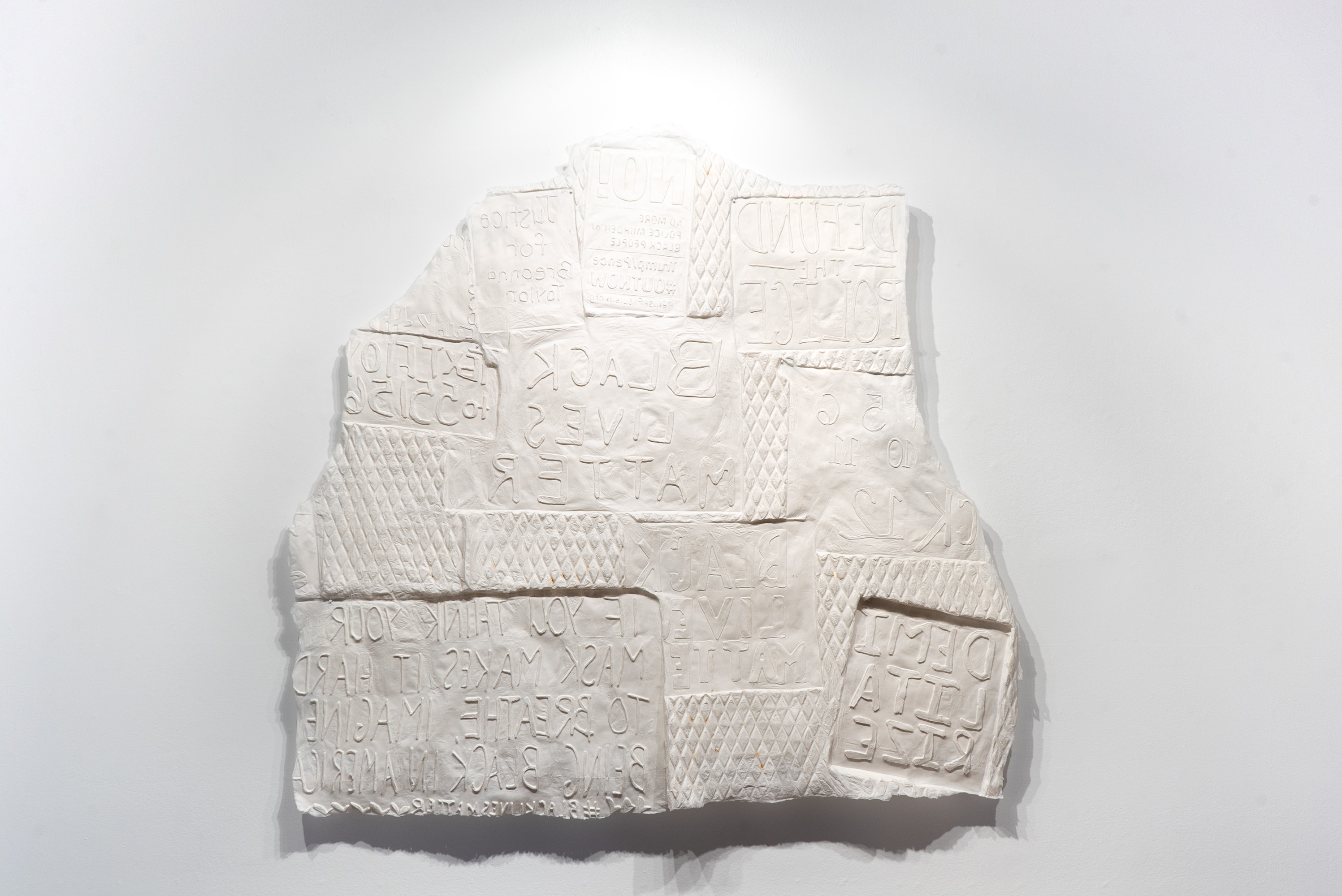
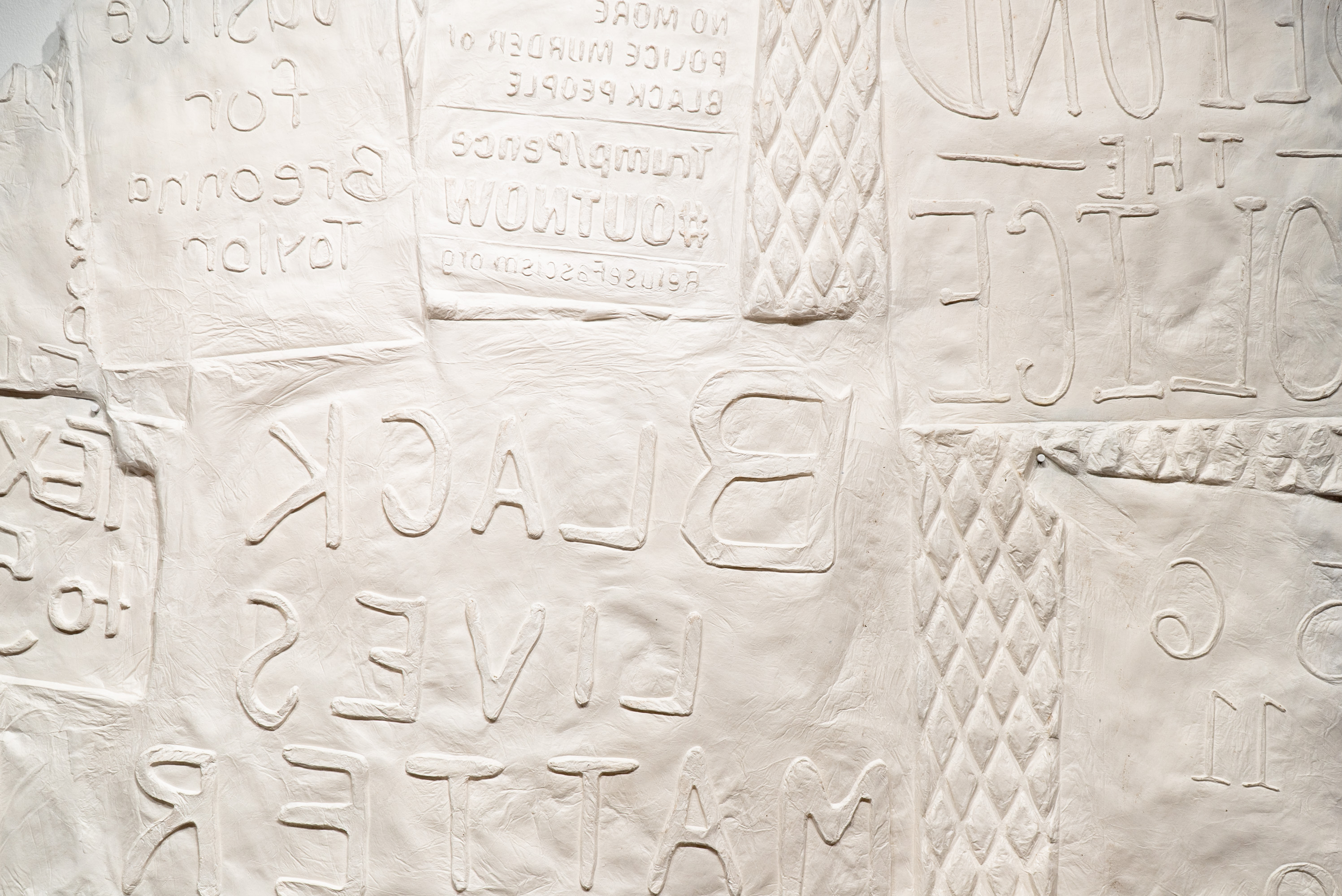
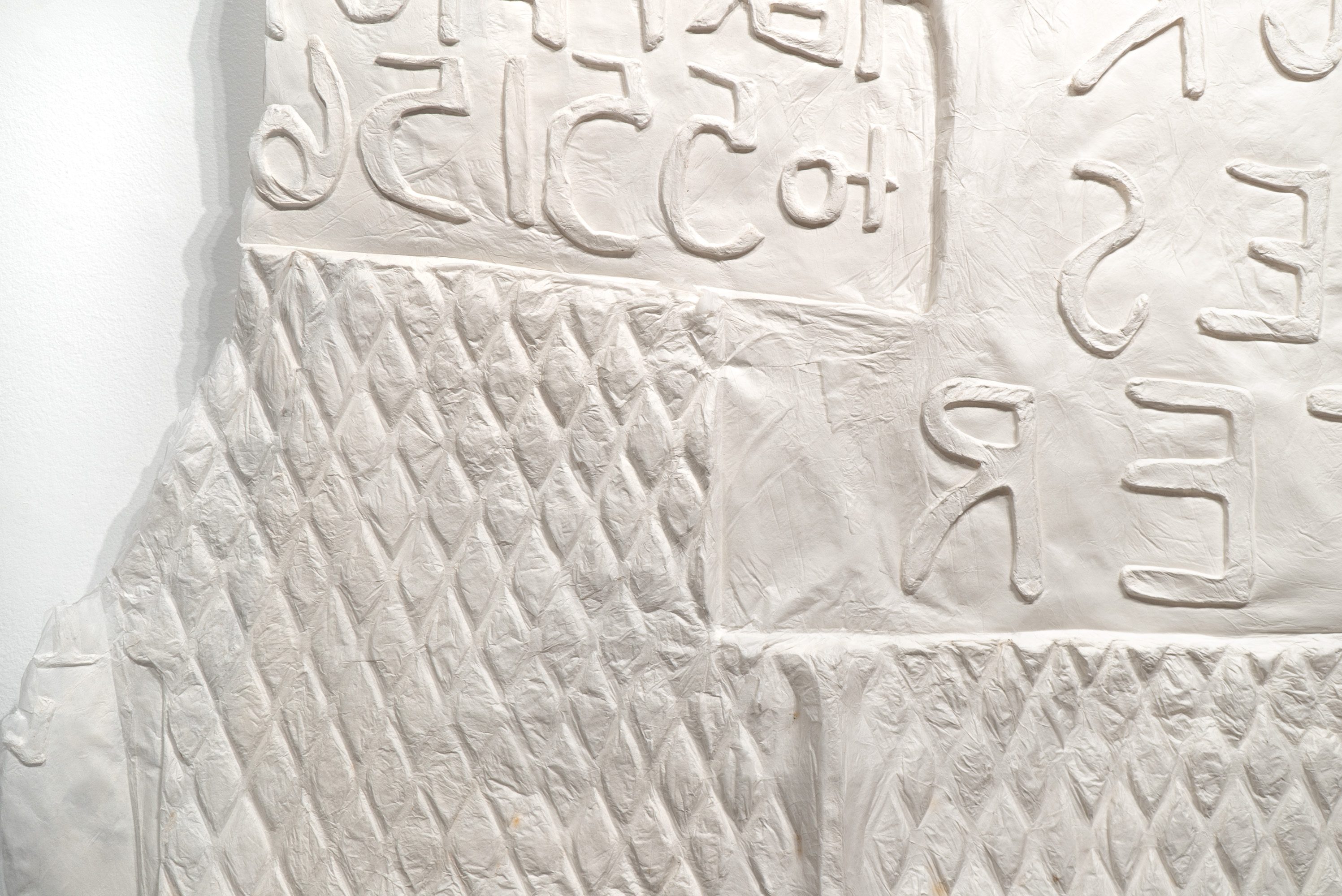
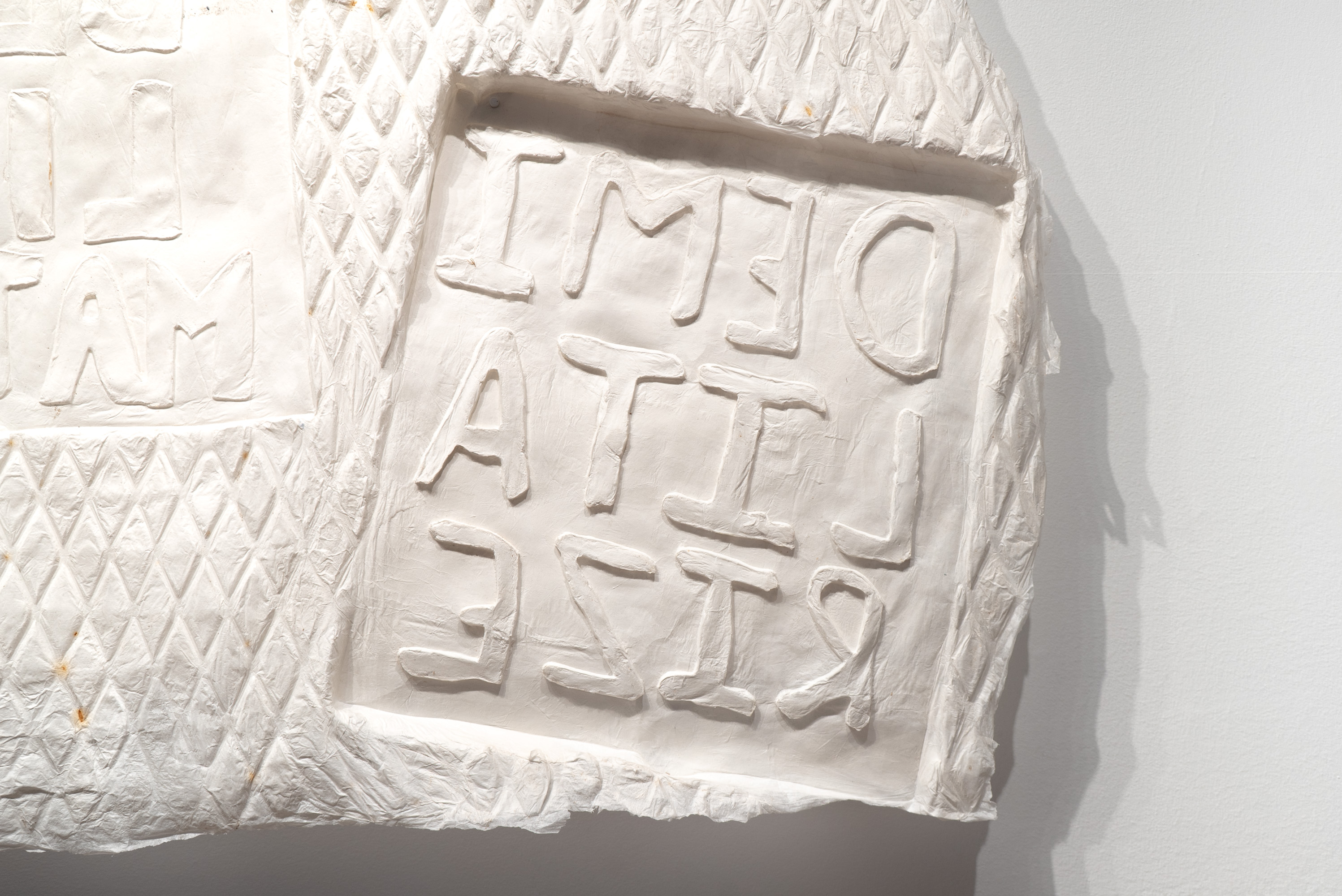

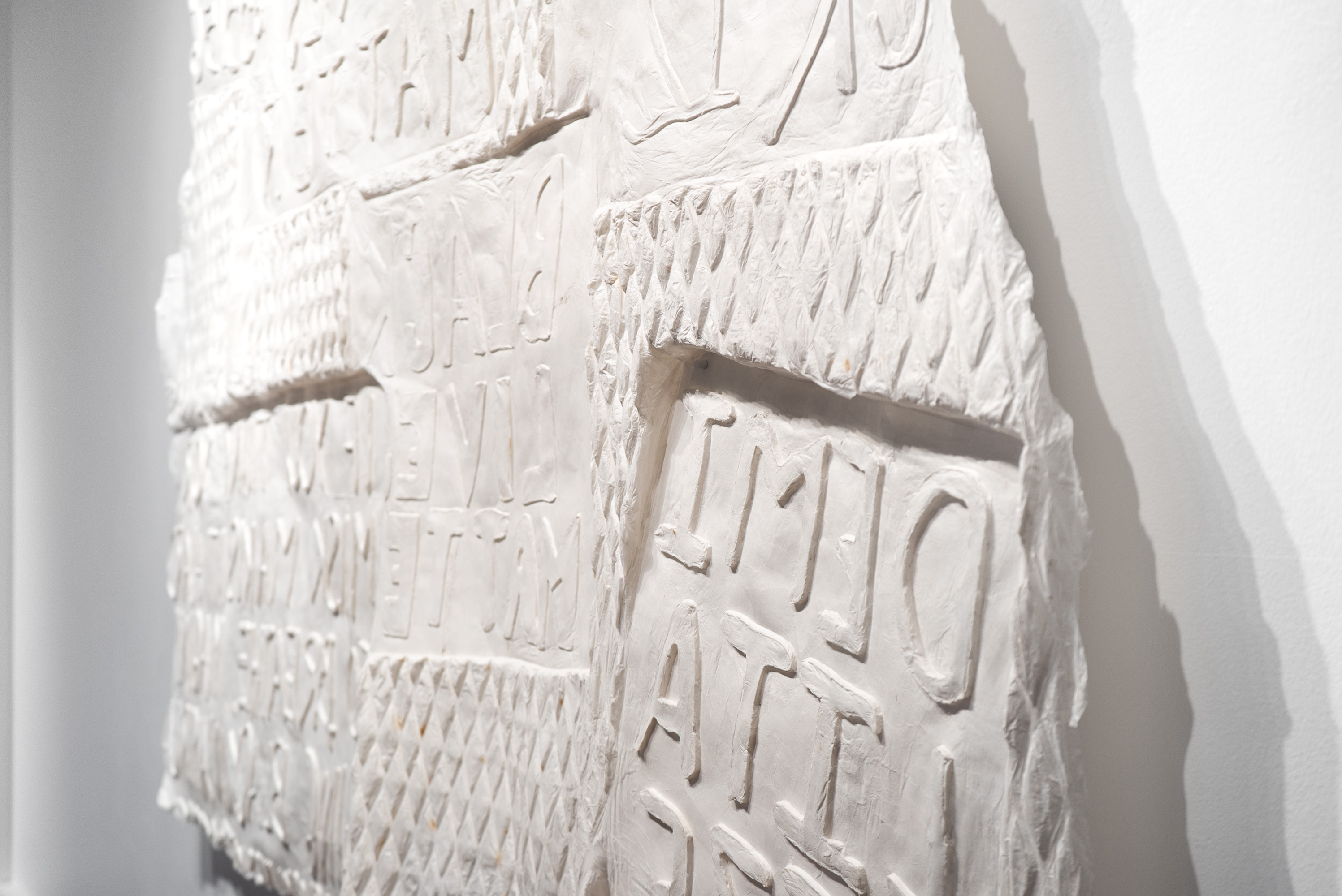


What Happens After This?
2020
Paper squeeze
72 x 82 in.
Scenic (Re)production
Scenic (Re)production consists of stations installed at scenic vantage points along a stream in South Windham, VT. At each station, participants are invited to imagine and recreate the mechanics of the mills that shaped the economic and natural history of the area. Written prompts are given, but no other props or imagery are provided.
By reenacting the dynamics of power production in the landscape and substituting their bodies for the mill machinery, participants become part of the scenery, and onlookers are invited to photograph the landscape during these reenactments.
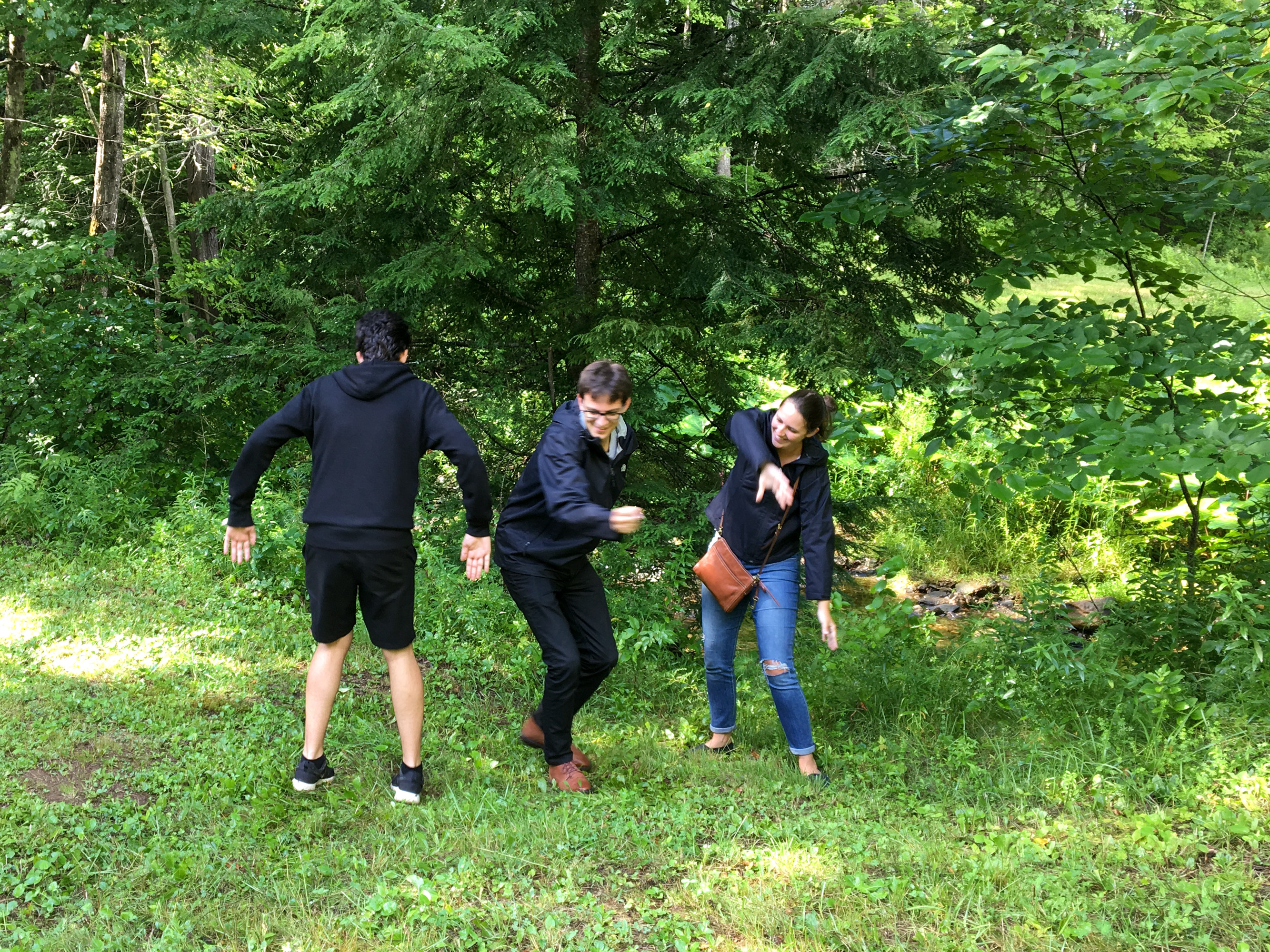

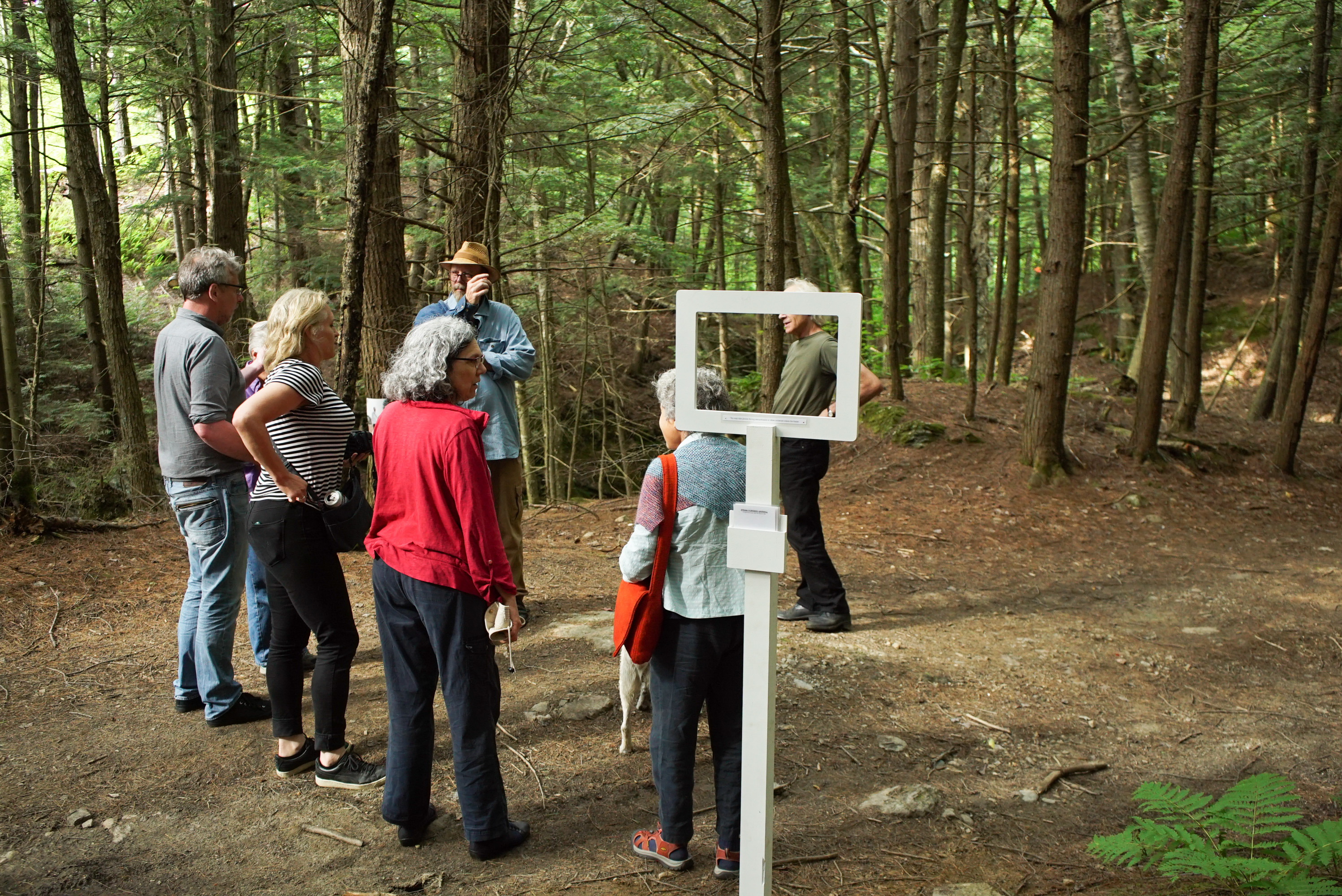



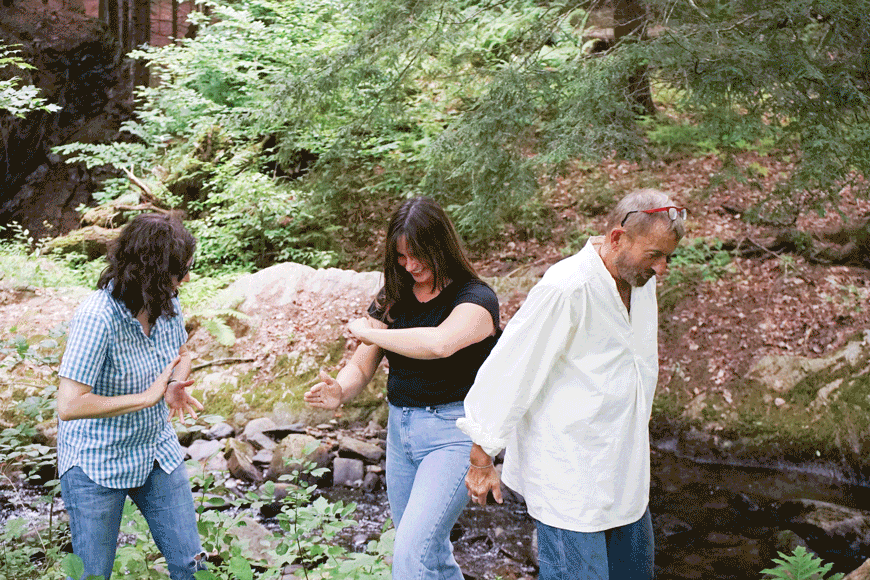
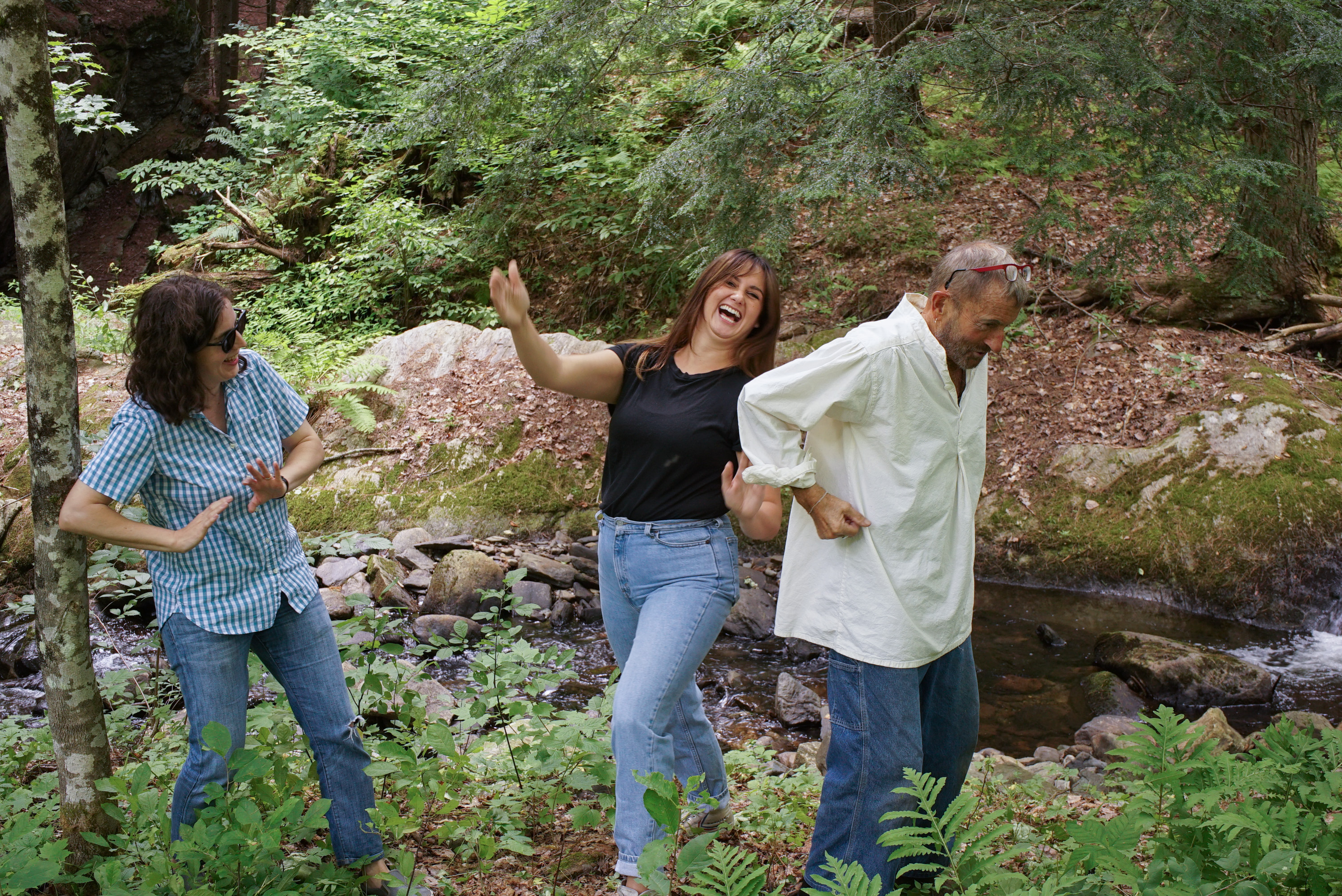




Scenic (Re)production
2017
3 stations with cue cards; installed in South Windham, VT
Dimensions variable
project documentation
Recycling Richard Long: Gallery Walls Circle
In this work, I tried to engage with the idea of recycling as broadly and holistically as possible, with regard not only to the materials used, but also to the process of making, as well as the conceptual and aesthetic basis of the work.
I was inspired by Richard Long, who brought natural and native materials from his walks into the gallery space. Like many land artists, his work complicated and broadened ideas about the site-gallery-artwork relationship.
Recycling Richard Long: Gallery Walls Circle was also inspired by my experiences working in various museums and galleries. As a preparator, I am quite familiar with building and tearing down temporary walls for exhibitions, and I had wanted to use discarded walls as material for a new artwork for some time. Thus, my work engages with Long’s practice as a playful homage and an experiment of sorts by recycling not only materials, but also ideas.
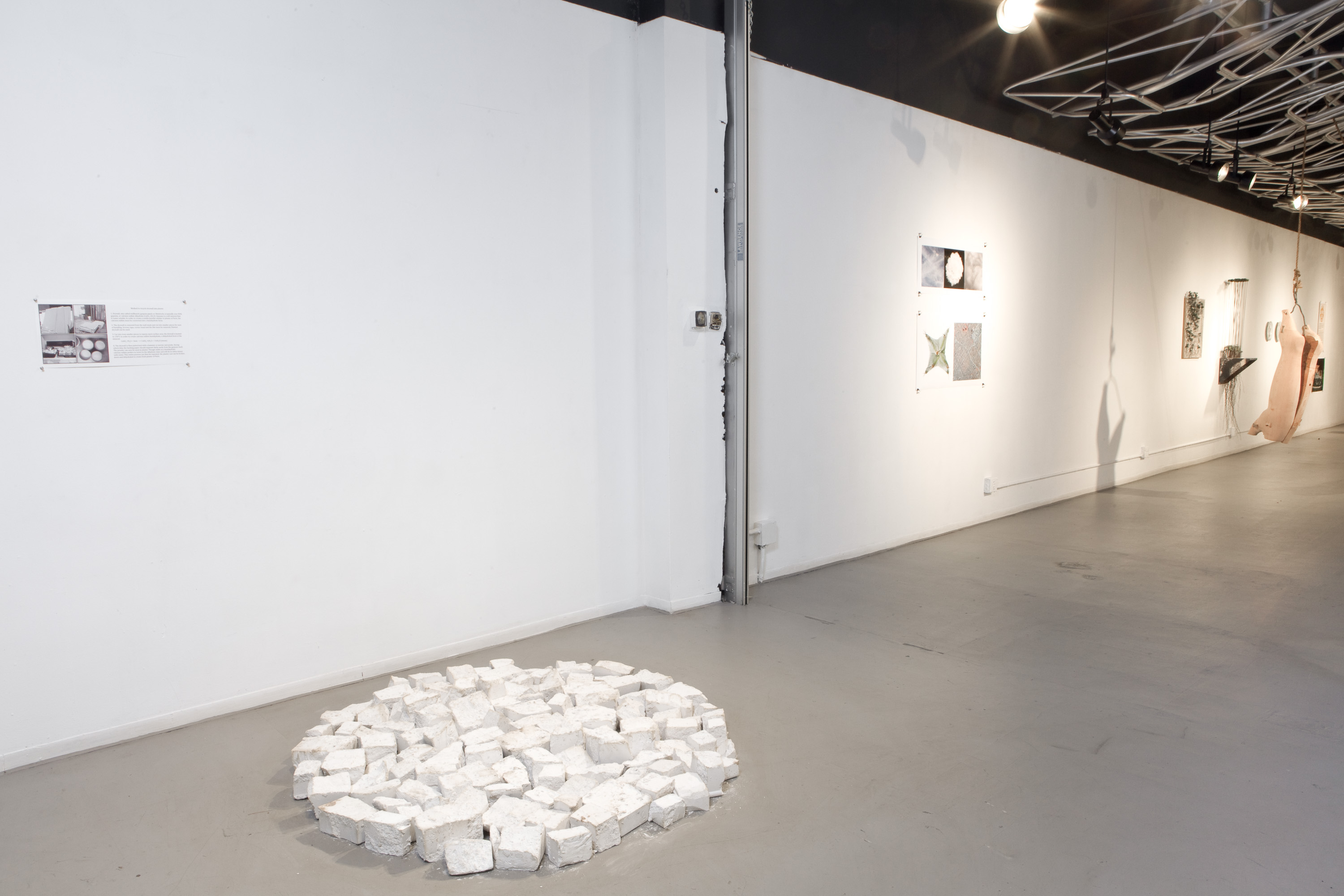


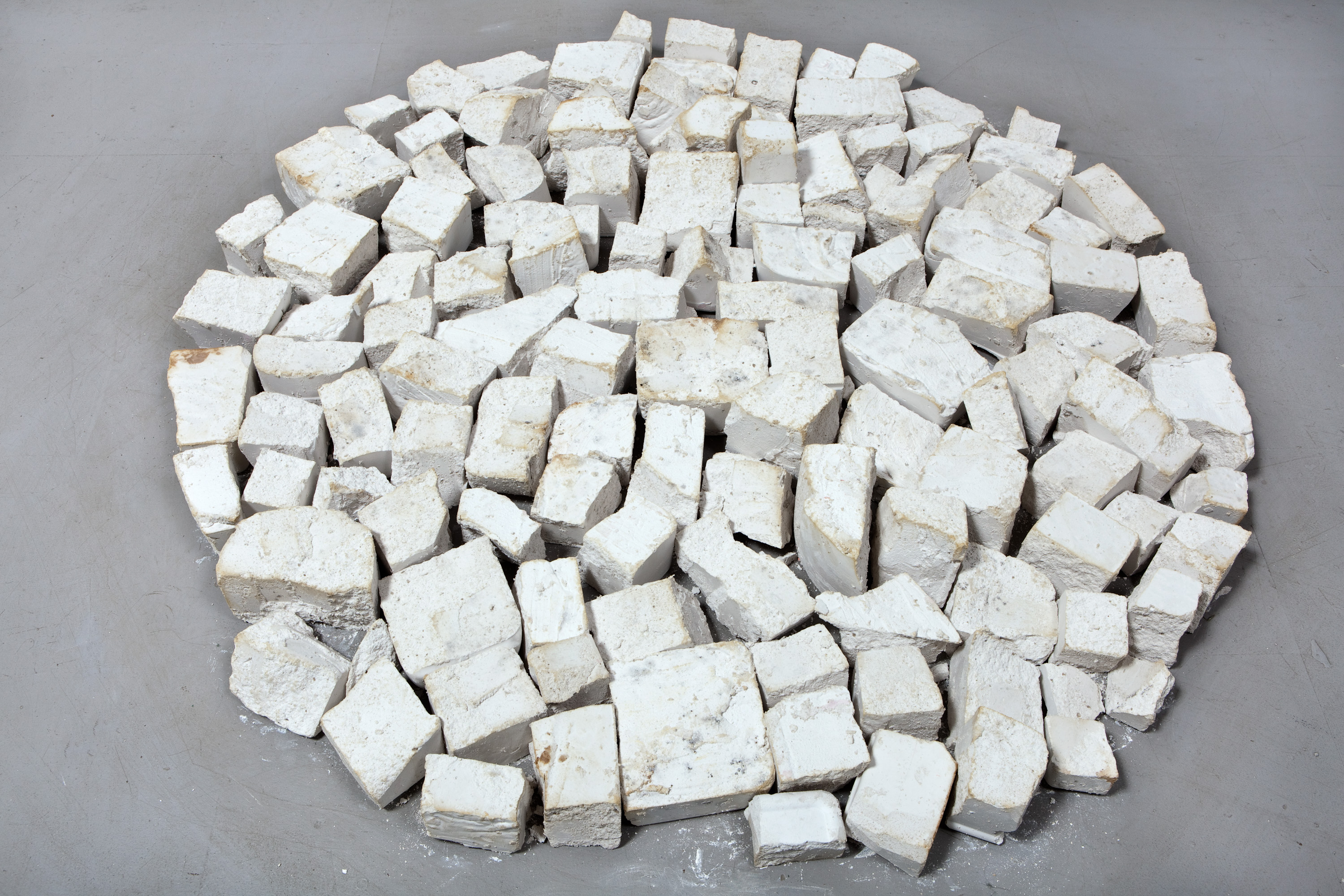

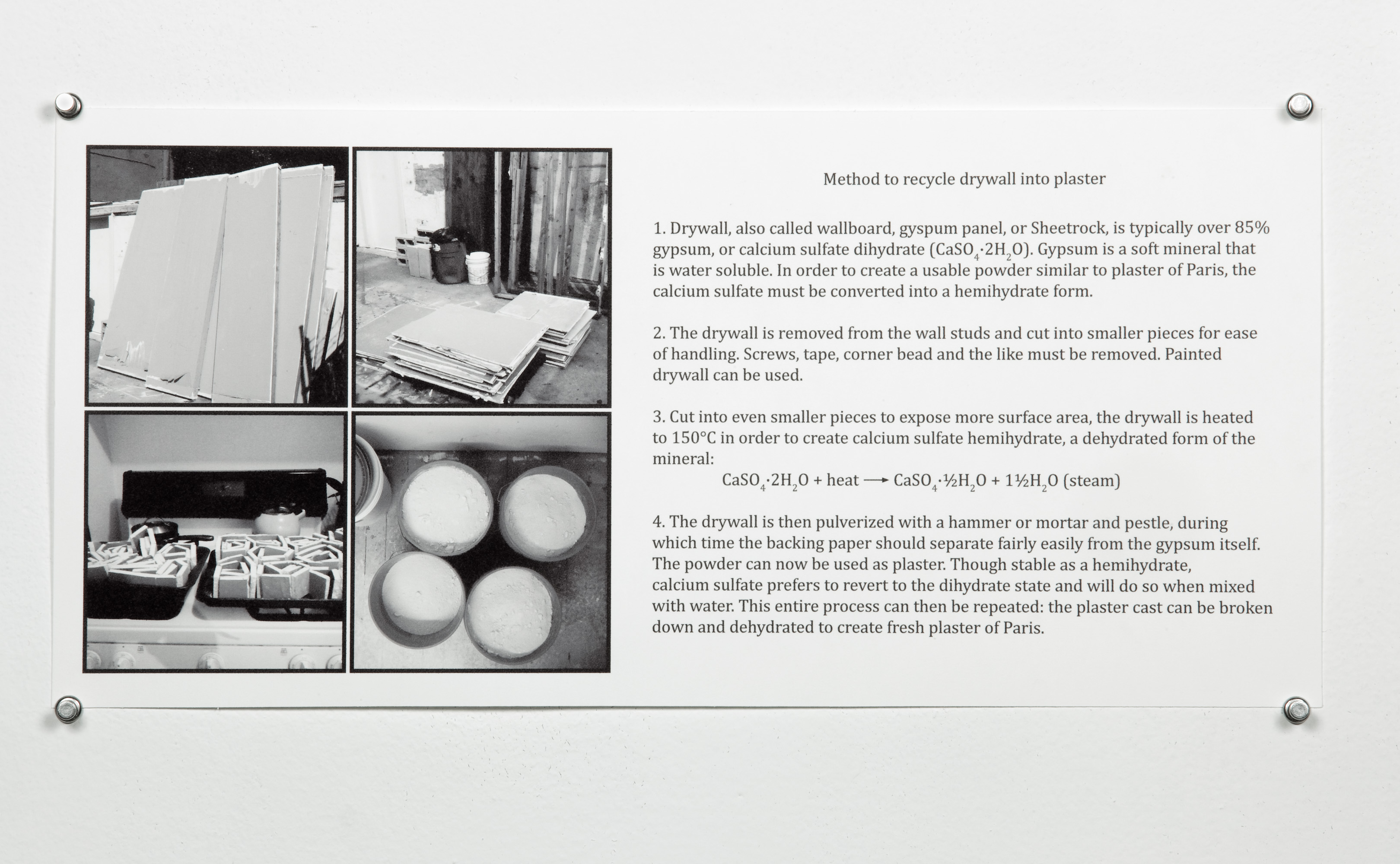
Recycling Richard Long: Gallery Walls Circle
2009
Gypsum, recycled from temporary gallery walls, cast into blocks and arranged into a 6 ft.-diameter circle
Photos: Michael Underwood
One of the stipulations that I gave myself for this project was that I would not purchase anything new. Thus the entire process of breaking down the drywall and baking and pulverizing the gypsum was quite humble and low tech. After first breaking down the drywall, I used an old blender and my oven at home to dehydrate and pulverize the gypsum before casting it into blocks using various containers that I had in my studio. The amount of material determined the scale of the work, and the final forms were determined by the process rather than a priori aesthetics.
RECYCLING PROCESS
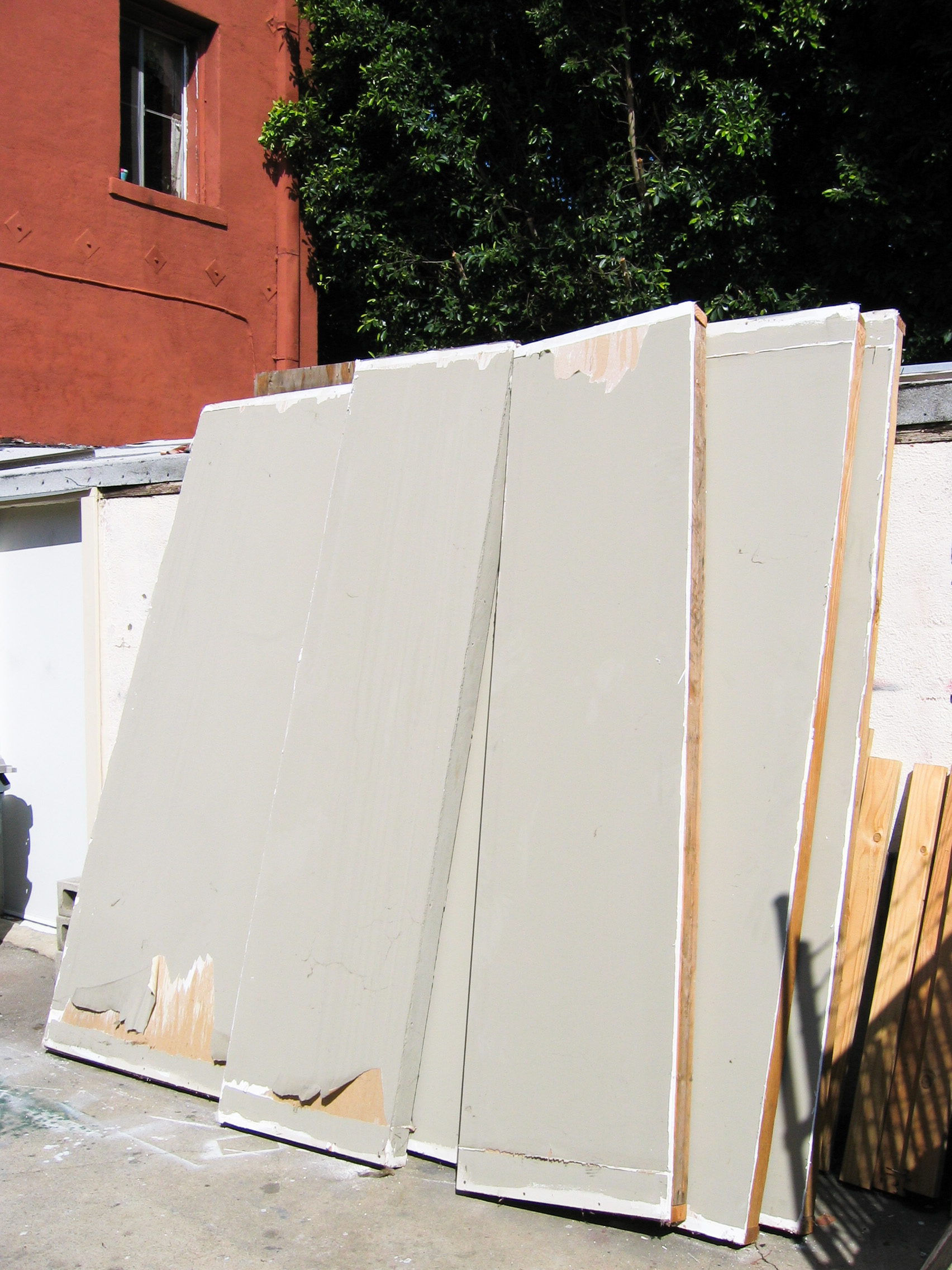


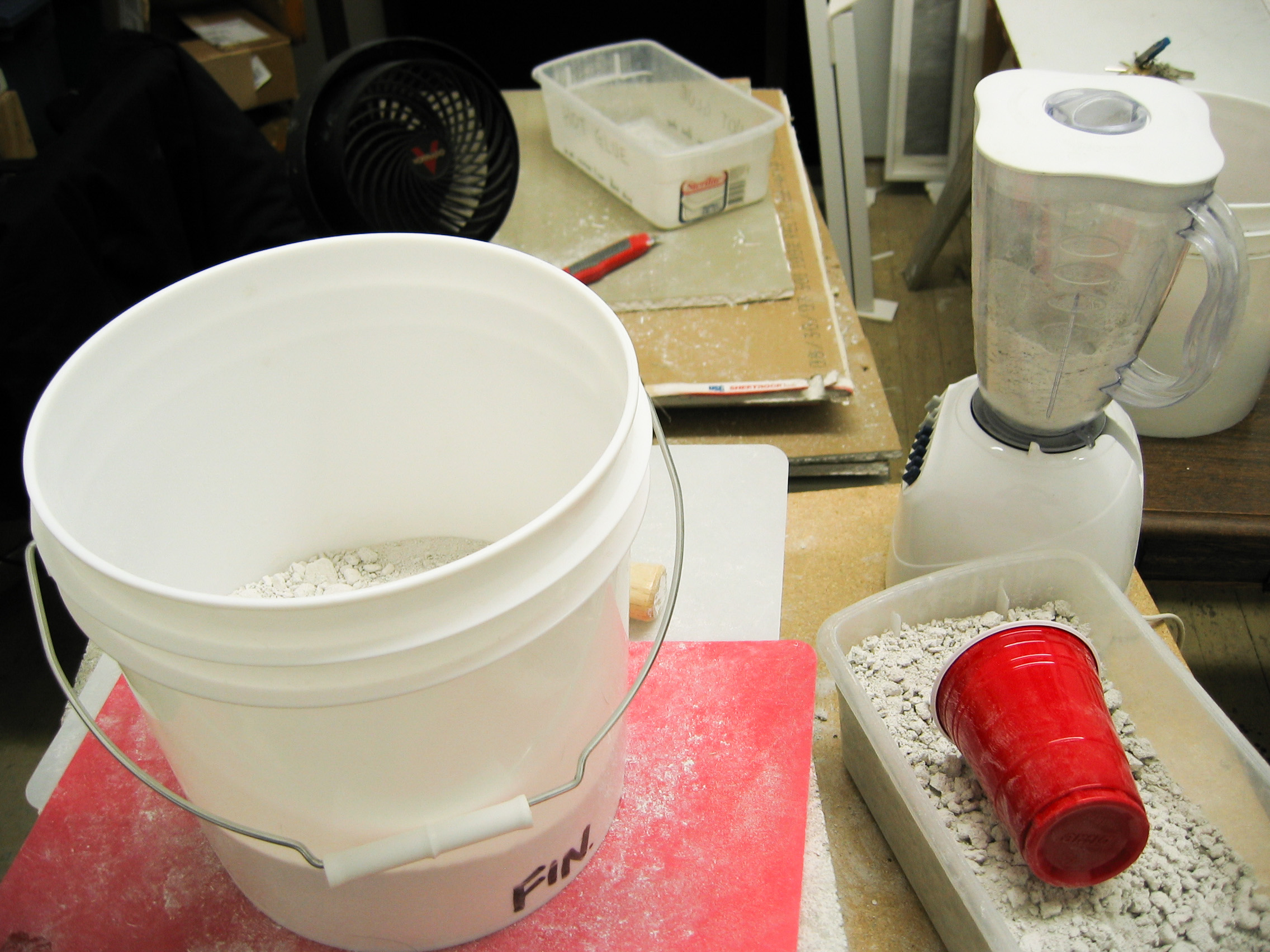
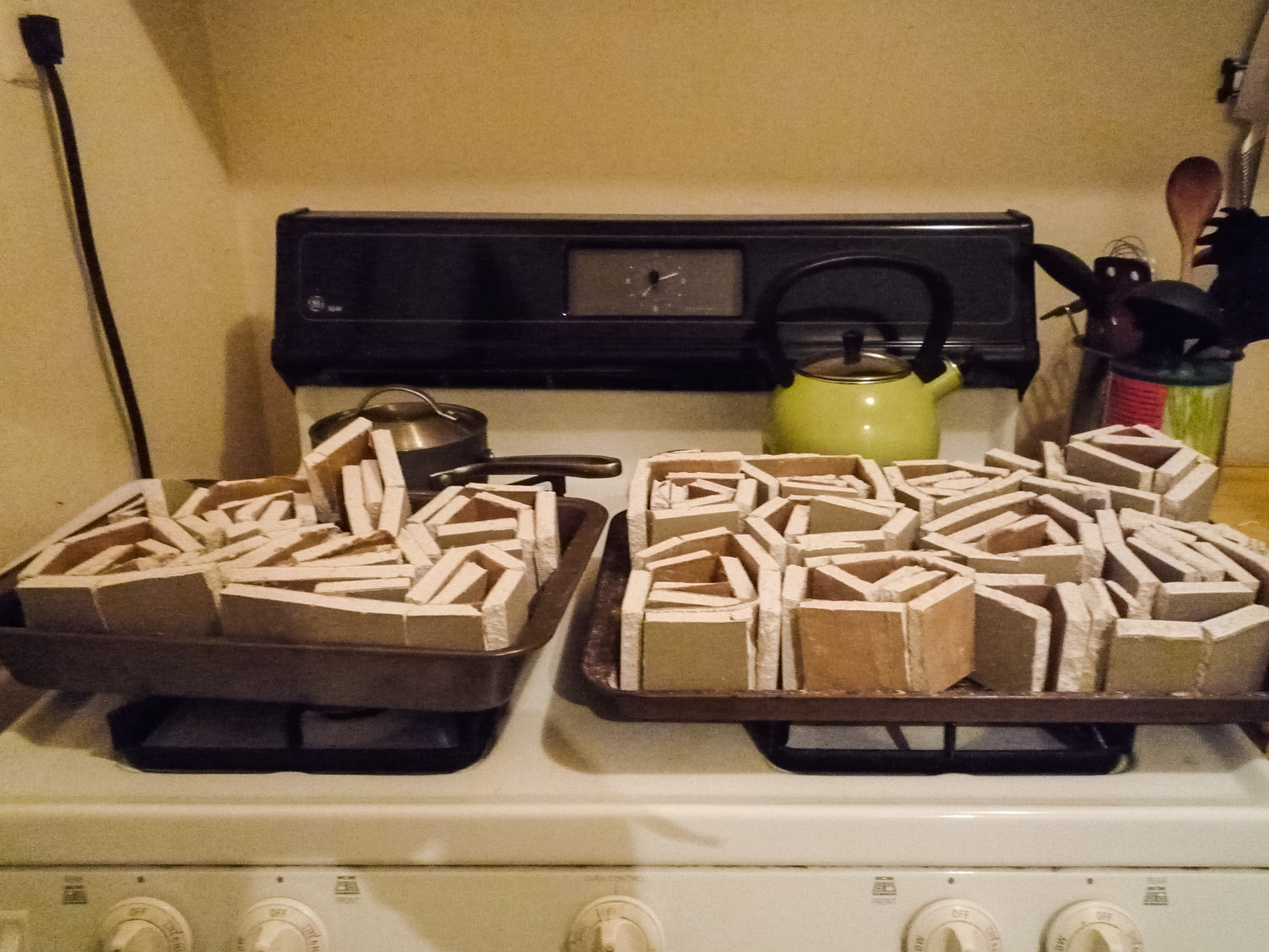

Amazon River Transplant
Growing out of the desert with reckless momentum, Las Vegas has been called a city of the future. But Vegas, like many American cities, is in desperate need of water. In contrast, the Amazon River basin has been compared to a time machine, a place lingering in an era before civilization. And no landscape on Earth is more permeated by water.
This body of work is based around a "modest proposal" to supply Las Vegas with water from the Amazon River. Part of this central conceit imagines natural resources not as commodities for human exploitation, but as being inextricably bound to both their land and their history. Thus, an unexpected, hybrid reality is created when water and local history from the Amazon is blended with the landscape and history of Las Vegas and the American Southwest. The works comprising Amazon River Transplant explore humankind's dipole fantasies of mastery over the land and reverence for an unspoiled paradise.

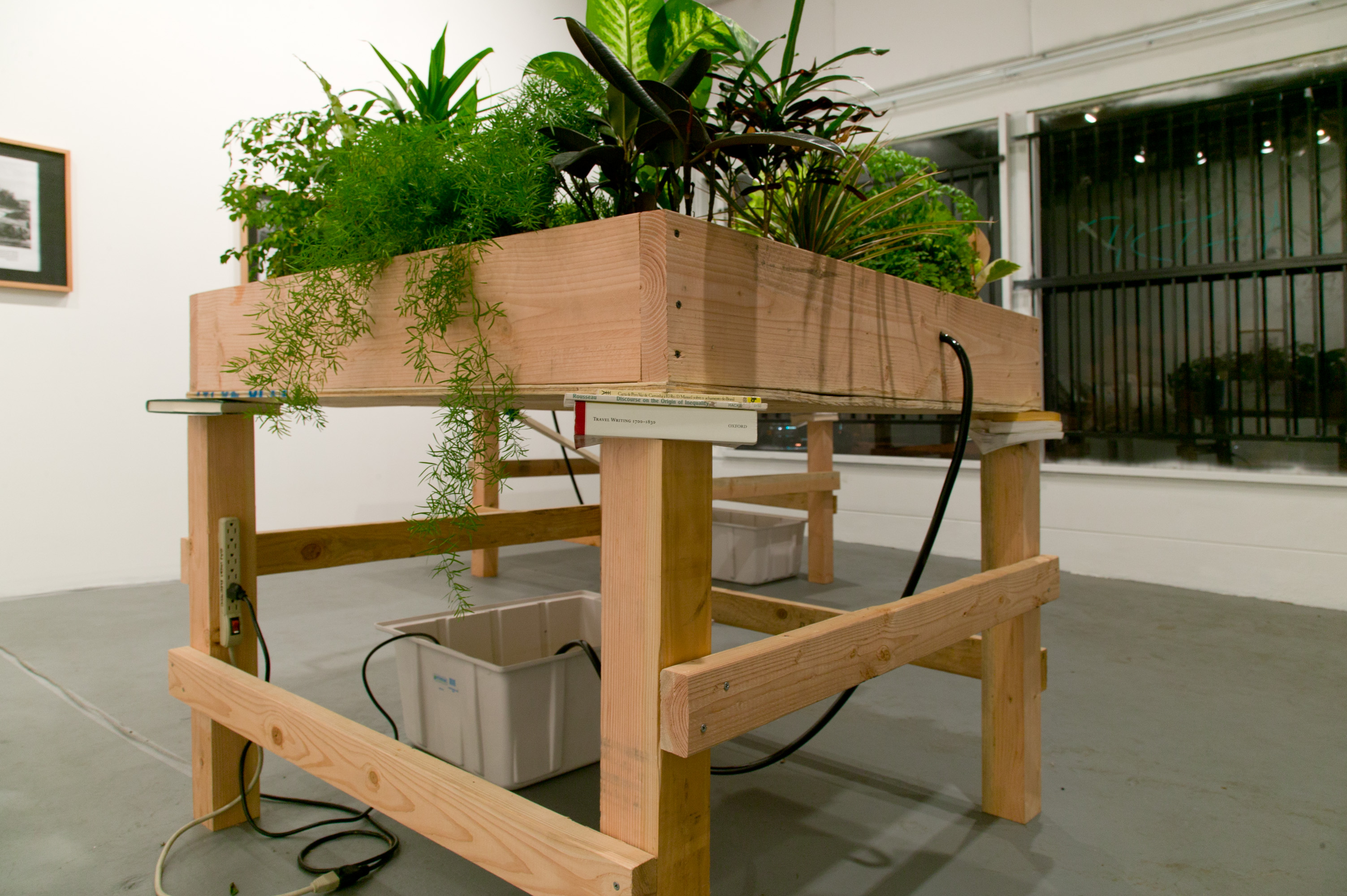



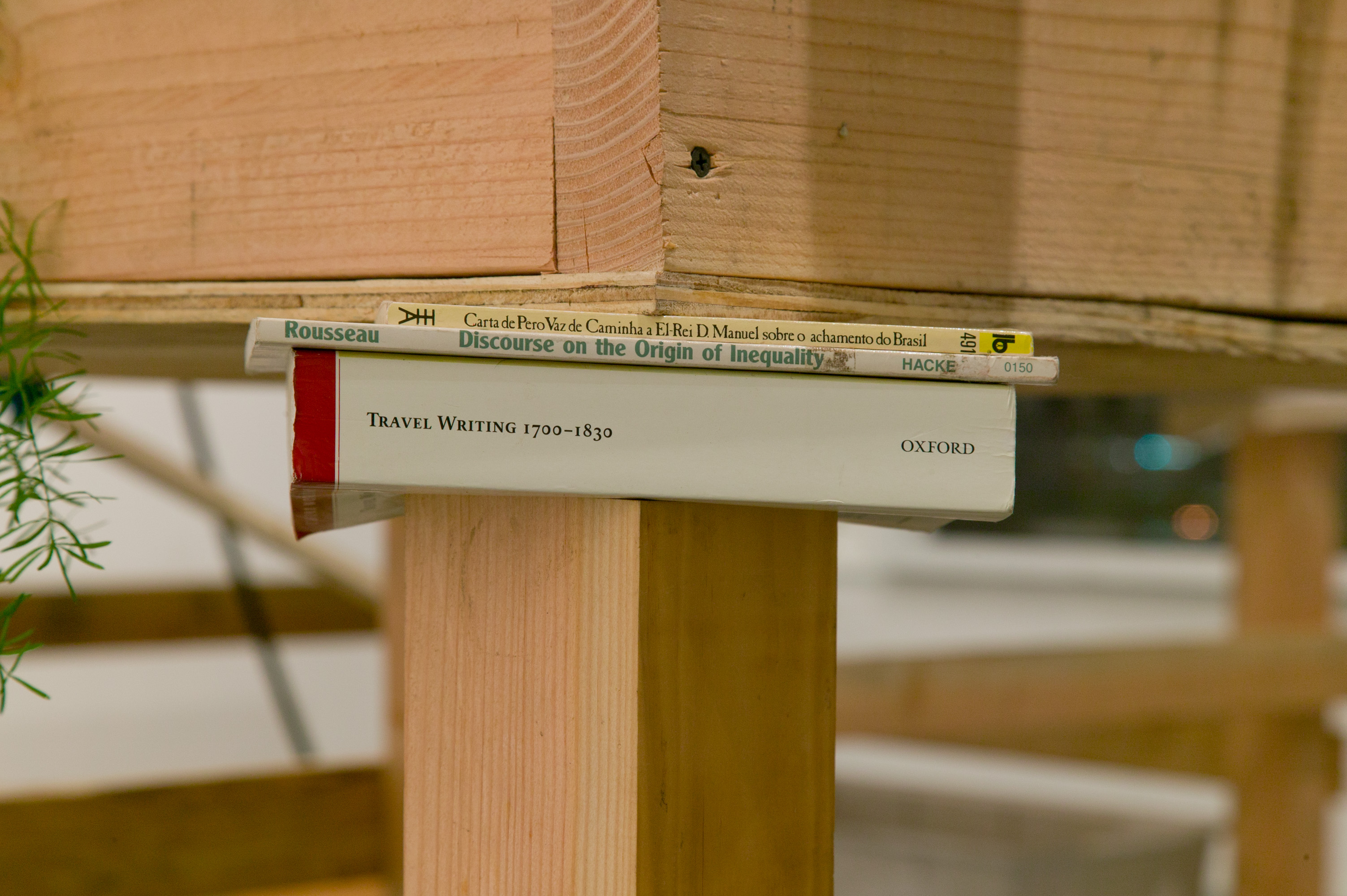



Amazon River Transplant
2008
Water, pumps, tubing, wood, rainforest flora, desert flora, books, informational binders
Dimensions variable
installation after 3 weeks





Post-Transplant Anomalies
These anomalies record hybridized and overlapping realities resulting from the Amazon River Transplant. The book photocopies reveal historical narratives that have mixed and peeled away like wet ink on paper, recording an alternate (prime) history in which the Mint Hotel overlooks the village of São Gabriel, and the Desert Inn is located on the banks of the Amazon.
Drawings depict other events rewritten by the movement of natural resources. A meeting between Thomas Jefferson and Theodore Roosevelt and the discovery of the Vegas Strip by Amerigo Vespucci represent other unlikely and unexpected convergences.
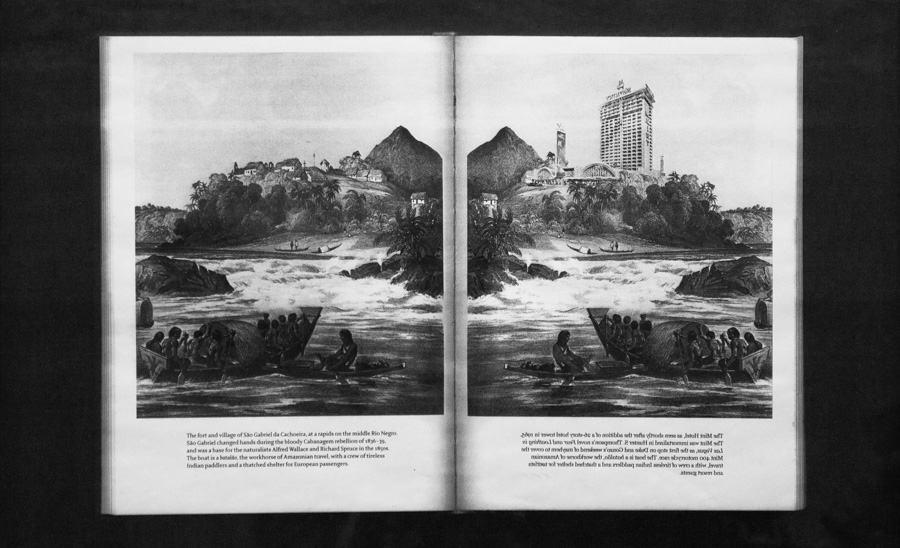
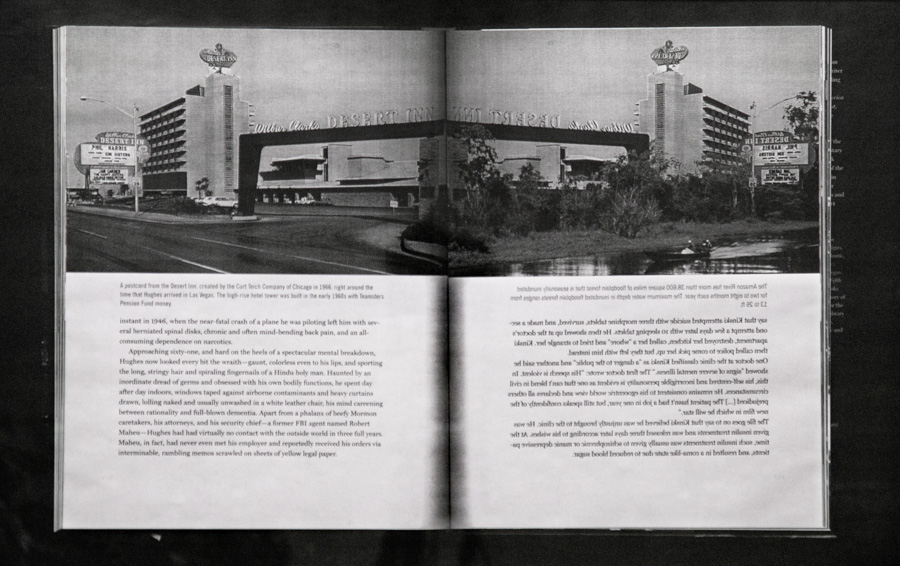
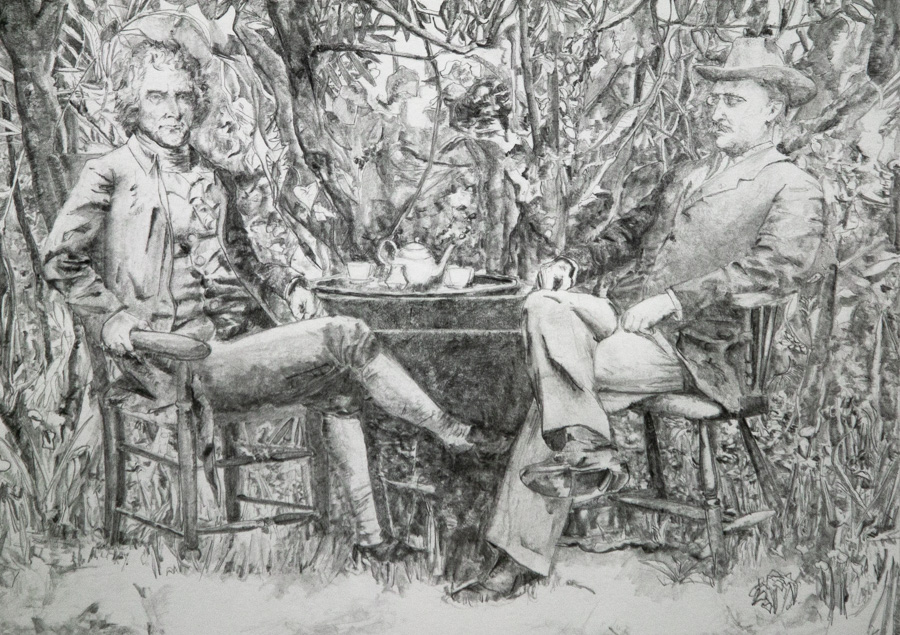
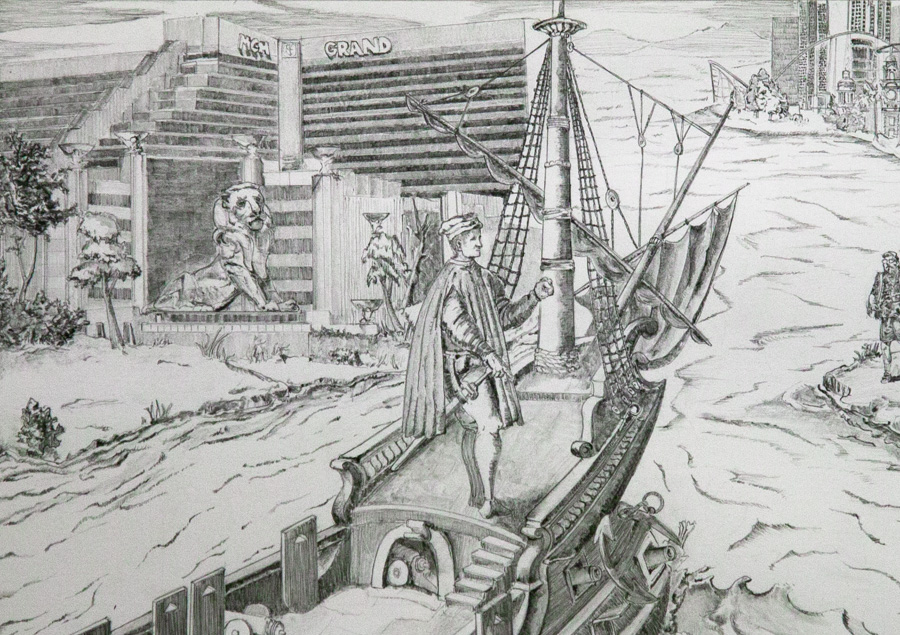
1. Pages 92 and 92′ of Tree of Rivers: The Story of the Amazon by John Hemming
2008
Photocopy
31 1/4 x 23 1/2 in.
2. Pages 192 and 192′ of Las Vegas: An Unconventional History by Michelle Ferrari and Steven Ives
2008
Photocopy
34 1/4 x 23 3/4 in.
3. Messrs. Jefferson and Roosevelt Take Afternoon Tea
2008
Graphite on paper
4. Amerigo Vespucci Discovers the Strip
2008
Graphite on paper